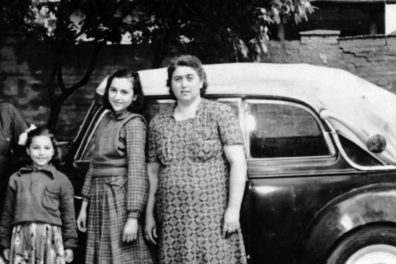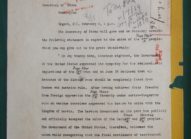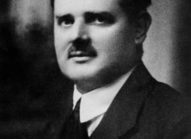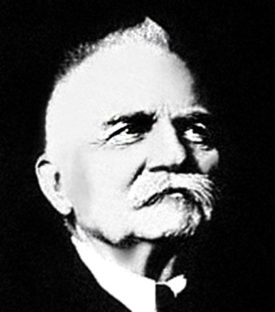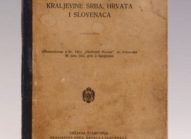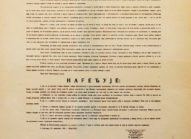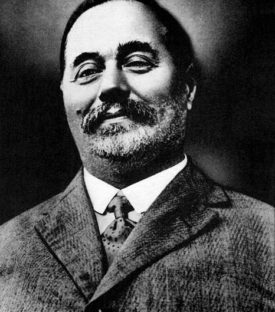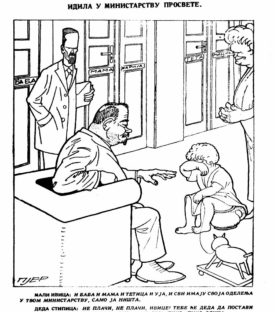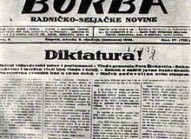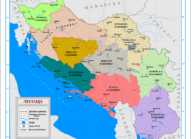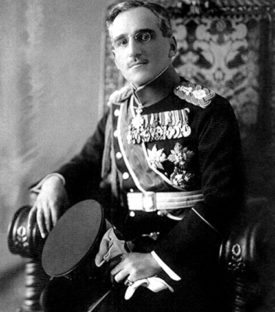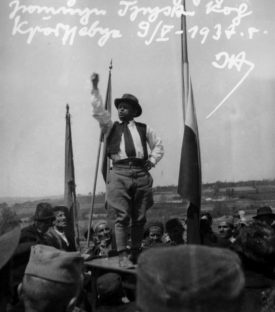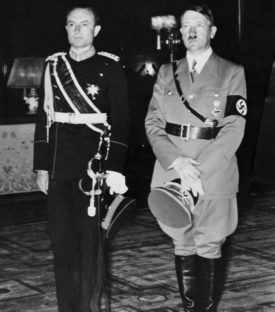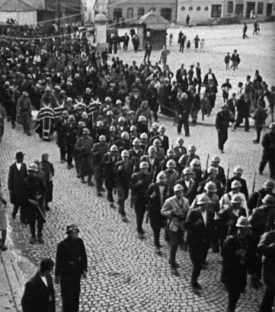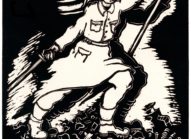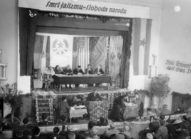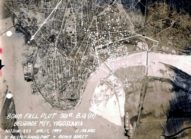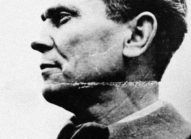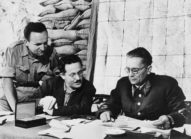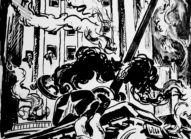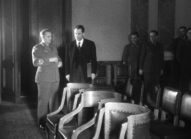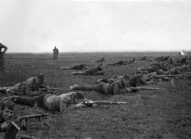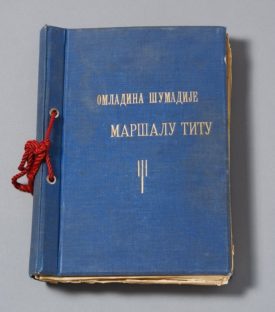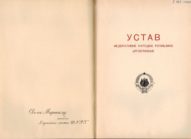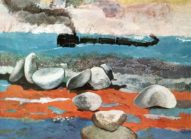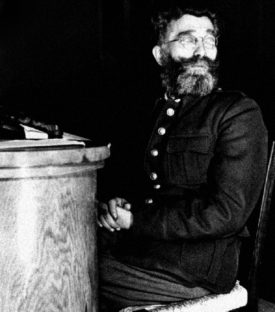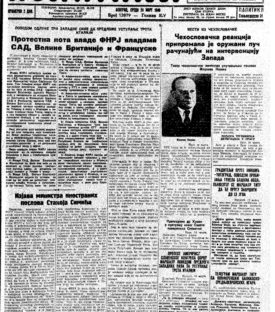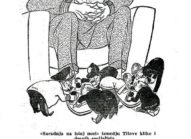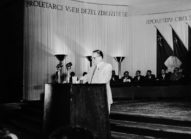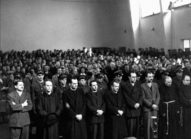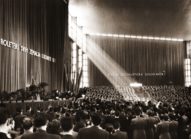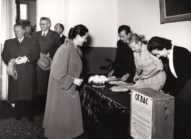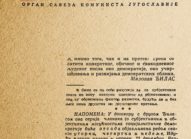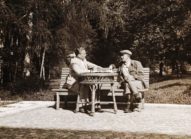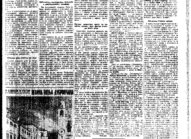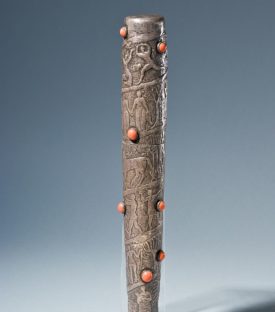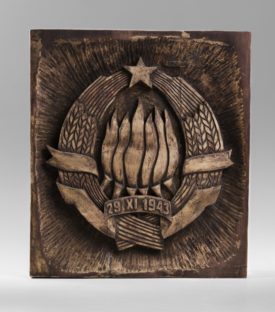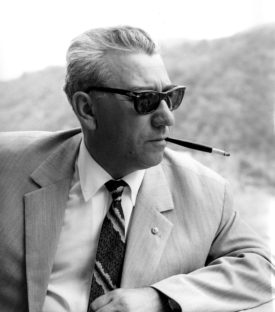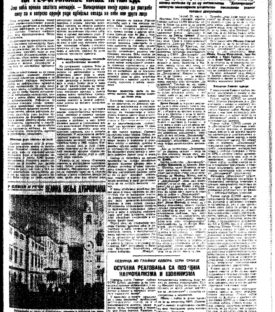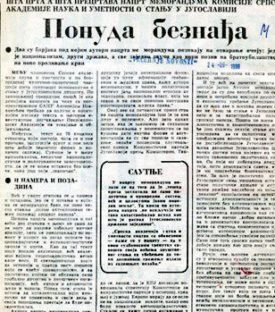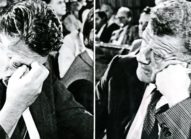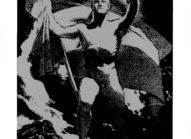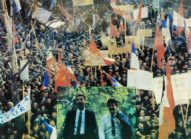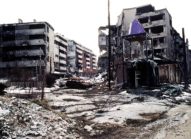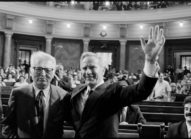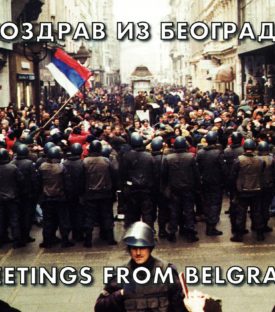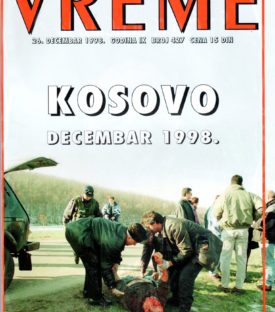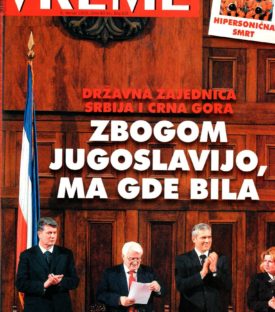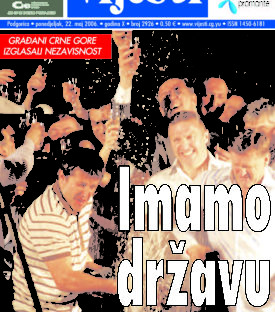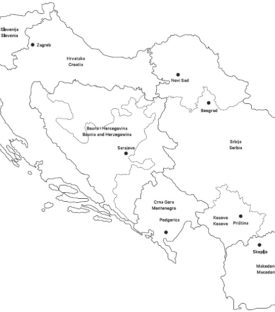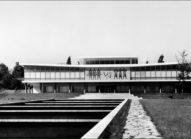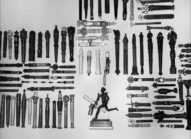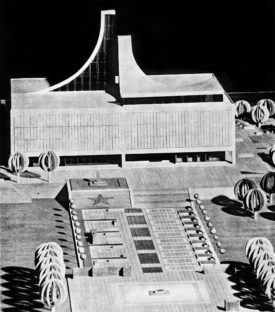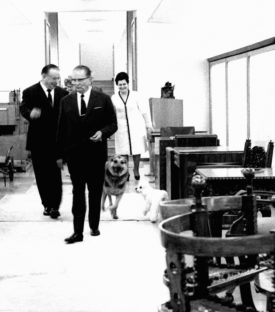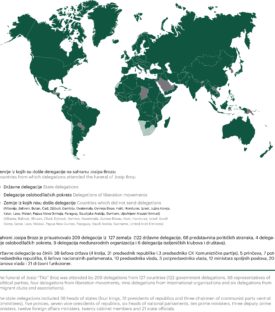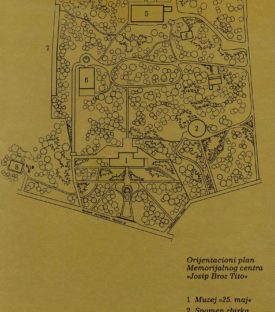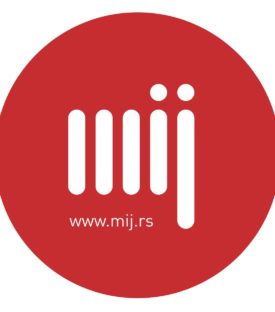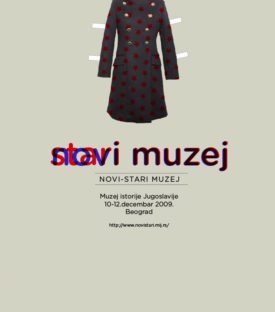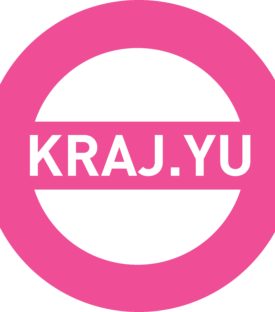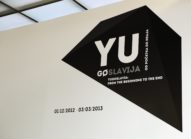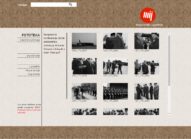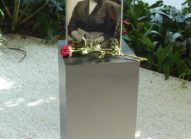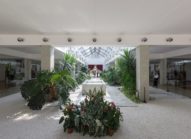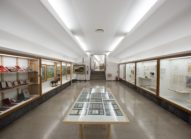1919 - Norway was the first country to recognize the Kingdom of Serbs, Croats and Slovenes in January. In February came the recognition from the United States, and other countries followed their examples after the signing of the Versailles Peace Treaty.
About the Museum
Museum of Yugoslavia is an open institution that encourages different actors to actively perceive the present by modern interpretation of the past. Our mission is to be the place of open dialogue, to exchange knowledge and experiences on the social and cultural phenomena of the 20th century with all institutions, organizations and individuals interested in issues on Yugoslav heritage and Yugoslav past. Through our programs and activities, we encourage social memory and culture of remembrance related to development of the Yugoslav idea, since the creation of the Yugoslav state as a kingdom, until its breakup in the early 1990s. By the innovative approach to unique collections and preserved testimonies of Yugoslavia we offer authentic insights, knowledge and experiences through exhibition, educational and interactive programs to our visitors.
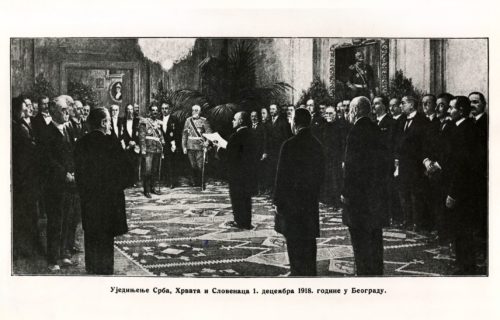
The Kingdom of Serbs, Croats and Slovenes was established in Belgrade, on December 1. The prince regent, Aleksandar Karađorđević, declared the unification of the Kingdom of Serbia, founded in 1882, with the State of Slovenes, Croats and Serbs, acting in the name of his father, King Petar I Karađorđević. The country was based on full equality between the Kingdom of Serbia and the State of Slovenes, Croats and Serbs. Question of the state system was left to the Constituent Assembly, as an expression of free will of all citizens of the new state.
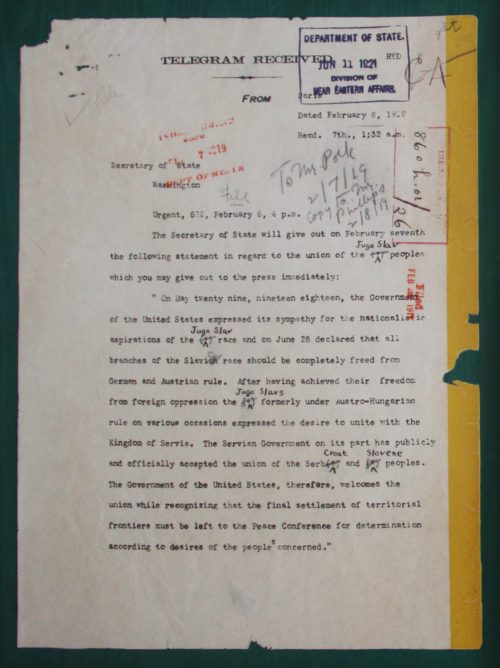
Telegram from Woodrow Wilson which announces the recognition of the Kingdom of SHS, from the archives of the Museum of Yugoslavia
Norway was the first country to recognize the Kingdom of Serbs, Croats and Slovenes in January. In February came the recognition from the United States, and other countries followed their examples after the signing of the Versailles Peace Treaty.
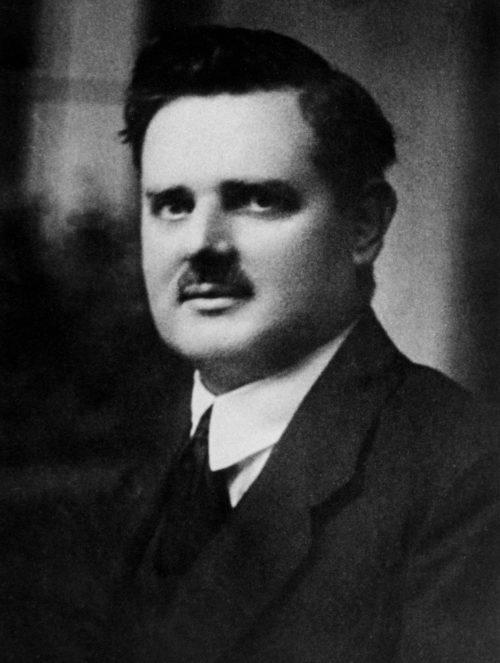
Filip Filipović, one of the founders of the Socialist Workers' Party of Yugoslavia
Temporary National Representation started to work as the first Yugoslav Assembly. The first Yugoslav parties were formed, the Democratic Party and the Socialist Workers’ Party of Yugoslavia (from 1920, it was the Communist Party of Yugoslavia).
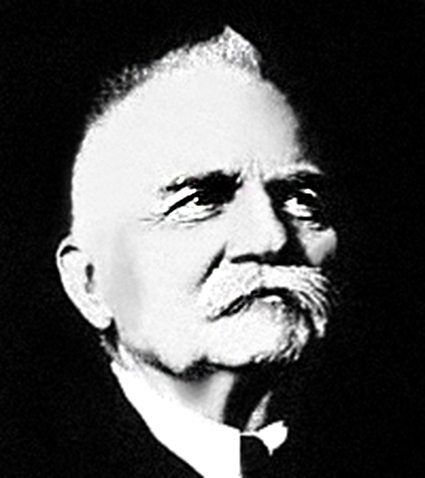
Ljubomir Davidović, leader of the Democratic Party
In the elections for the Constituent Assembly, centrist Democratic Party and the Radical Party won the majority, but the substantial support was expressed to the Communist Party of Yugoslavia and the Croatian Republican Peasant Party, which strongly opposed centralism, and even the monarchical state organization.
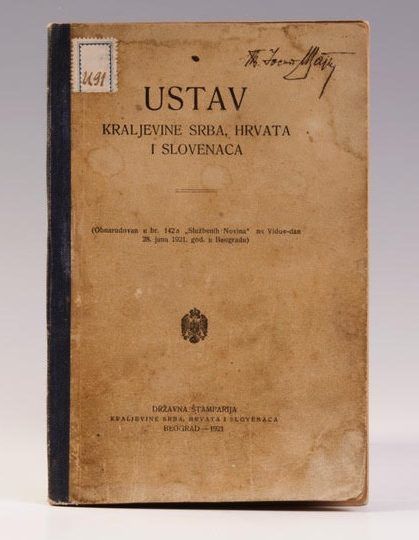
Front page of the Constitution, from the collection of the Museum of Yugoslavia
The first Constitution of the Kingdom of Serbs, Croats and Slovenes (Vidovdan Constitution) was adopted on June 28, and it remained in force until 1929. Adopted by the narrow majority, without the participation of members of the Communist Party of Yugoslavia and the Croatian Republican Peasant Party, it has established a unitary arrangement, with great powers of the monarch, but also a significant number of socio-economic rights. Slovenian and Croatian political parties boycotted the Constitution’s adoption so that the act deepened the existing crisis and further sharpened the so-called Croatian question.
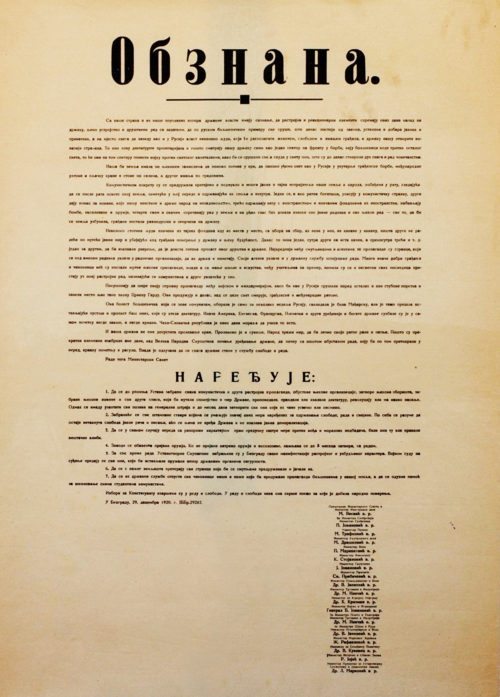
Notification from the collection of the Museum of Yugoslavia
After the assassination of the communist minister of police, Milorad Drašković, and failed assassination attempt on the Regent, the Law on the Protection of the Country was passed, which banned the Communist Party of Yugoslavia, whose actions then continued underground.
British Pathé
King Aleksandar married the Romanian princess, Mary, the daughter of King Ferdinand and great-granddaughter of Queen Victoria. Three sons were born in this marriage, and they were named after three characteristic names for the three Yugoslav nations: Petar II (Serbian), Tomislav (Croatian) and Andrej (Slovene).
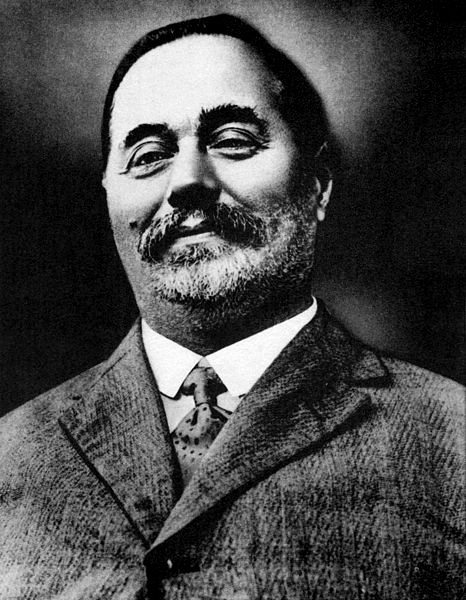
Stjepan Radić, leader of the Croatian Peasant Party
The deputies of the Croatian Peasant Party came to Belgrade and took an oath on Vidovdan Constitution. Thus, they in fact recognized the monarchy and rejected republicanism from their party program.
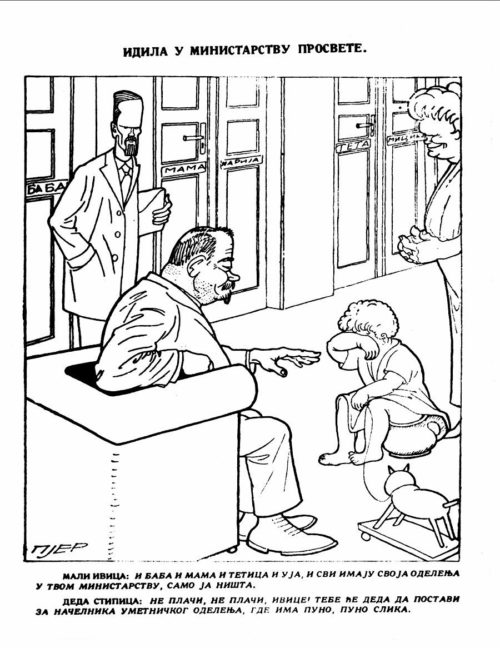
Pjer Križanić's caricature
Parliamentary elections were held in which the Radical Party and the Croatian Peasant Party received the highest number of votes. There was a big turnaround in the political scene when the Radical Party and the Croatian Peasant Party formed government together.
Stjepan Radić's funeral
A member of the Radical Party, Puniša Račić killed two deputies of the Croatian Peasant Party, in the National Assembly, on June 20, but the party leader, Stjepan Radić, soon succumbed to wounds. This was the reason for the abolition of parliamentarism and the introduction of dictatorship.
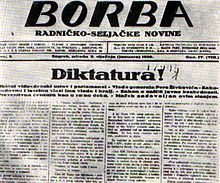
Front page of the newspaper "Borba"
King Aleksandar introduced dictatorship on January 6. Vidovdan constitution was repealed, the National Assembly was dissolved and the executive power was transferred to the king, all political parties and trade unions were banned. Members of the Communist Party of Yugoslavia, the Croatian Peasant Party and the Internal Macedonian Revolutionary Organization were subjected to a special prosecution. The 6 January Dictatorship was aimed at eliminating the national question, through the concept of an integrated Yugoslavia, which would erase all national and regional disparities in the country.
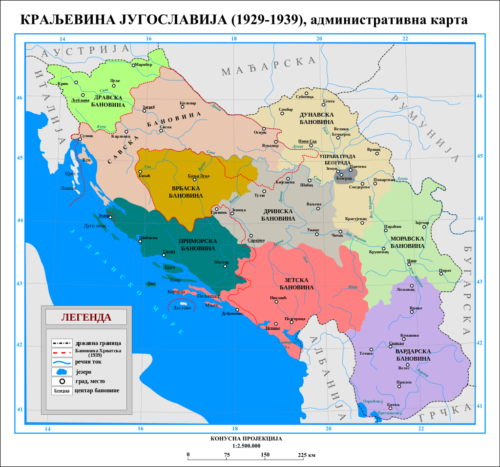
Map of the Kingdom of Yugoslavia
The Kingdom of Serbs, Croats and Slovenes, changed its name to the Kingdom of Yugoslavia in October 3. The ideology of integral Yugoslav nation was introduced and new administrative division was carried out – the country was divided to nine banovinas, which was supposed to break the historical provinces.
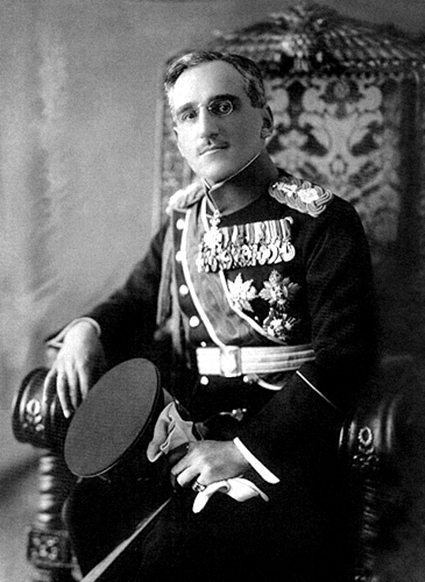
Alexander I Karađorđević
King Aleksandar brought the Constitution, which formally ended the period of the 6 January dictatorship. By this Constitution, known as the September or Octroyed Constitution, the king remained the most important factor in the state, while Yugoslavia was proclaimed a constitutional and hereditary, but no more parliamentary monarchy. September’s constitution was formally implemented until the end of the Kingdom of Yugoslavia.
Filmske novosti
Members of the Internal Macedonian Revolutionary Organization in cooperation with members of the Ustaša – Croatian Revolutionary Movement, assassinated King Alexander in Marseille (France). Since the heir to the throne was a minor, the management of the country was taken over by the regency headed by Prince Pavle Karađorđević, the cousin of the late king.
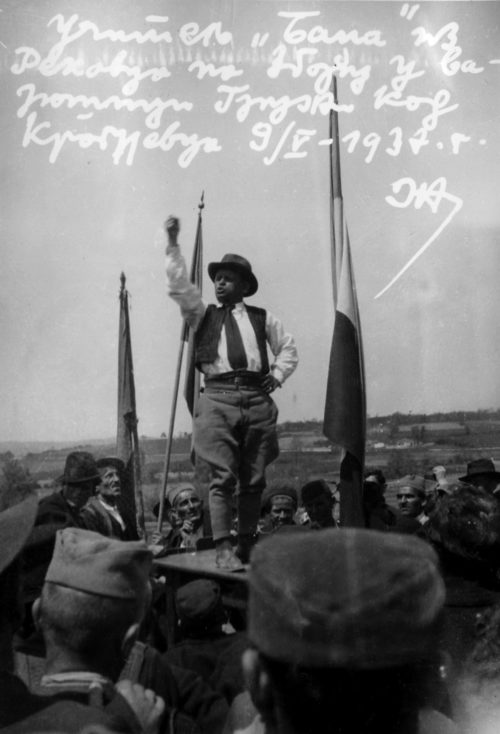
From the united opposition rally
Parliamentary elections were held, the last in the Kingdom of Yugoslavia, which were also the freest until then. Unlike previous elections, held under the strong pressure from the government, these were marked by pressure from “below”, carried out by supporters of the Croatian Peasant Party.
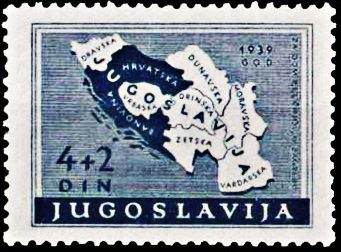
A postage stamp from 1939
Agreement Cvetković-Maček was signed on August 26, and Vlatko Maček, the chairman of the Croatian Peasant Party, became deputy prime minister. Banovina Croatia (Croatia, Dalmatia, Srem, parts of Bosnia) was formed, with powers close to the federal unit.
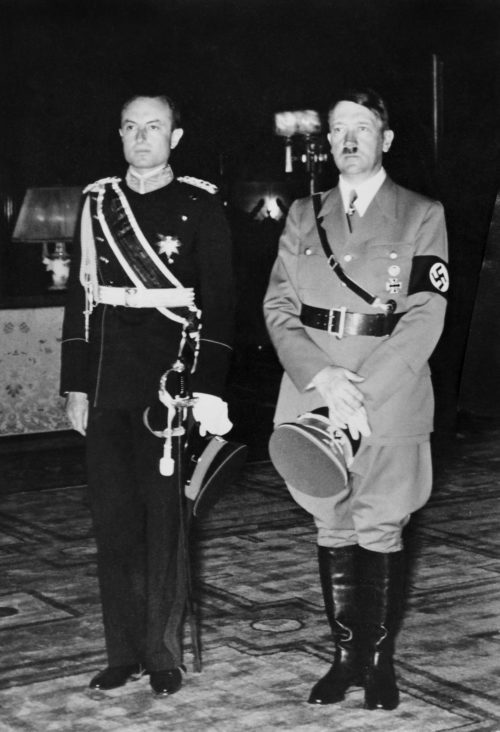
Prince Paul Karađorđević and Adolf Hitler
After Bulgaria joined the Tripartite Pact, on March 4, Prince Pavle met Hitler at the Berghof, on his invitation. Since Hitler was adamant that he would not allow the creation of the front against Germans in Balkan, he gave the prince an ultimatum asking him to sign the accession to the Tripartite Pact. Protocol on the Accession of the Kingdom of Yugoslavia to the Tripartite Pact was signed on March 25, in Vienna, by which the country joined Germany, Italy and their allies, although it was not obliged to participate in the war that began in 1939.
Antifascist demonstrations in Belgrade, March 27, 1941. Thanks to the archive of the Yugoslav Cinematheque
The military coup, which deposed Cvetković’s government and forced Prince Pavle to abdicate was carried out on March 27. This act was followed by anti-fascist demonstrations in the streets of Belgrade as well as of other Serbian cities by anti-German and pro-Serbian public, while Croatian and Slovenian part of the public remained calm. Juvenile Petar II was proclaimed king and the government of General Dušan Simović was formed.
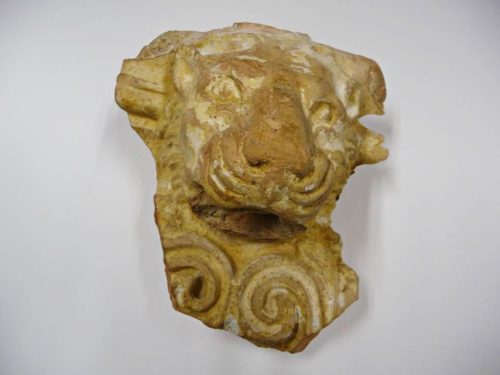
"Liona head"- part of the facade from the building of the National Library of Serbia, destroyed during the Nazi bombing. From the collection of the Museum of Yugoslavia
Germany attacked Yugoslavia on April 6, 1941. The Yugoslav army soon capitulated and King Petar II with the government left the country and moved to London. The country was divided into occupation zones, annexed territories and so-called Independent State of Croatia. Archive photo of the bombing.
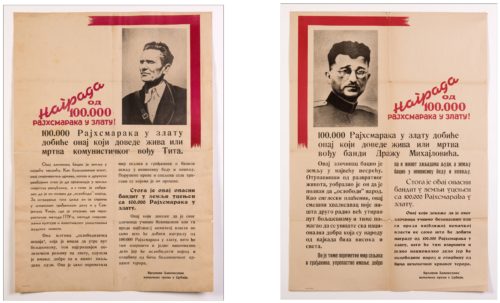
The warrant for the arrest of Josip Broz Tito and Dragoljub Draža Mihajlović, Belgrade, July 20th, 1943. From the collection of the Museum of Yugoslavia
In the summer of 1941, armed resistance against the occupiers began in Yugoslavia. A part of the royal army, which didn’t surrender to the occupying forces, formed the Yugoslav Army in the fatherland – Chetnik Detachments of the Yugoslav Army under the command of Dragoljub Draža Mihailović. The Communist Party of Yugoslavia, under the leadership of Josip Broz Tito, organized its forces (National Liberation Movement – Partisans) and invited all the peoples of Yugoslavia to an armed struggle against the occupiers and their collaborators. Over time, conflicts escalated between Chetniks movement, later compromised by the cooperation with the occupiers, and the national liberation movements under the control of the Communist Party of Yugoslavia.
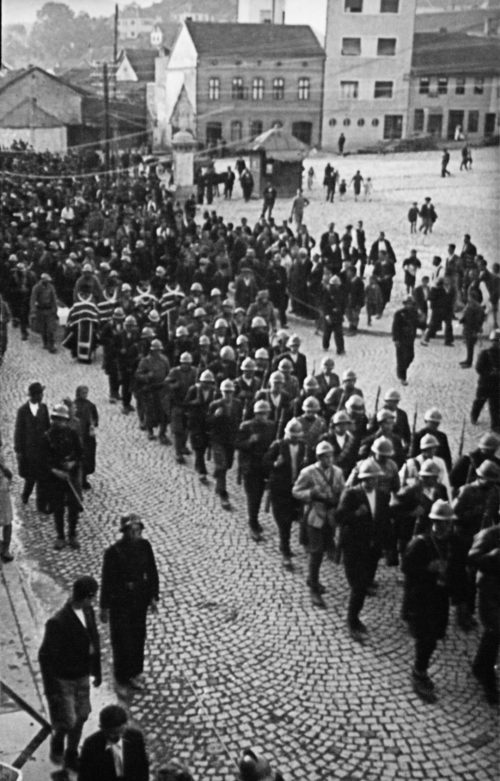
From the archives of the Museum of Yugoslavia
Užice Partisan Squad liberated Užice and thus created the first free territory in occupied Europe, the so-called Republic of Užice.
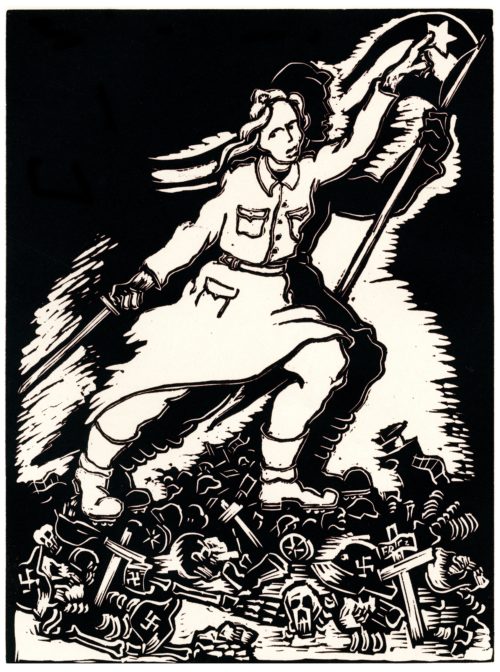
Branko Kovačević, And Defeated 1945.
J. B. Tito decided to engage partisans in a “long march” (about 4,000 soldiers), which headed from the eastern parts to the western regions of Bosnia. During that march, according to German estimates, partisan forces increased ten times and amounted into a serious military force.
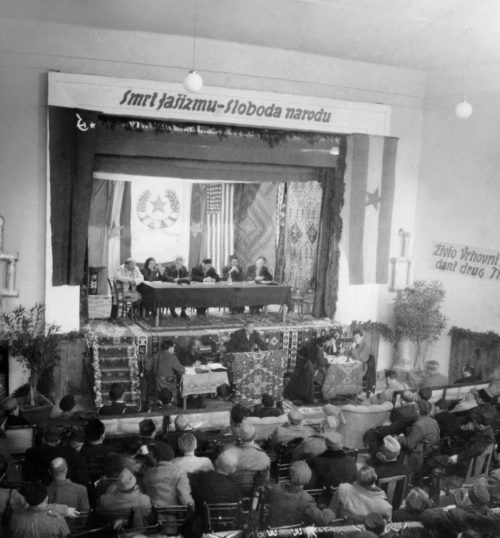
From the first session of the Anti-Fascist Council for the National Liberation of Yugoslavia (AVNOJ). From the archives of the Museum of Yugoslavia
At the first session in Bihać, the Anti-Fascist Council for the National Liberation of Yugoslavia (AVNOJ) was formed, and it took over the function of the first partisan government.
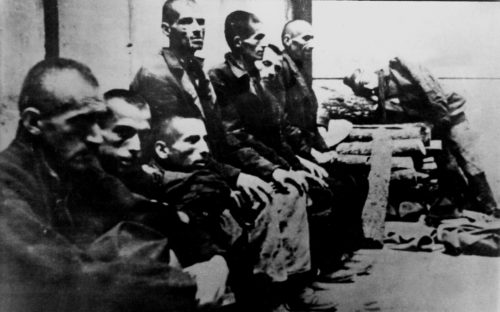
Internees in the concentration camp Jasenovac, 1942. From the archive of the Museum of Yugoslavia
Ustasha's government in the Independent State of Croatia established a system of concentration camps in Jasenovac for the purpose of mass destruction of Serbs, Jews and all those who were declared enemies of the Ustasha regime. Crimes committed in Jasenovac, certainly the most monstrous by their scale and sadism on the territory of Yugoslavia and this part of Europe, during Second World War lasted until May 2, 1945. The number of casualties was evaluated differently, from 40,000 in 1990 and after Croatian independence to 700,000, which was the official data at the time of Yugoslavia – and it has remained the subject of controversy. According to current data, 81,998 people were listed individually.

Đurđe Teodorović, Sutjeska, 1953.
Units of the People’s Liberation Army of Yugoslavia went through the biggest temptations in the battles of Neretva and Sutjeska. Despite heavy losses, the majority of the unit, together with the supreme headquarter, was preserved. During the Battle of Sutjeska, Tito was wounded in the arm and thus became the only supreme commander, during the Second World War, who suffered an injury in direct armed combat.
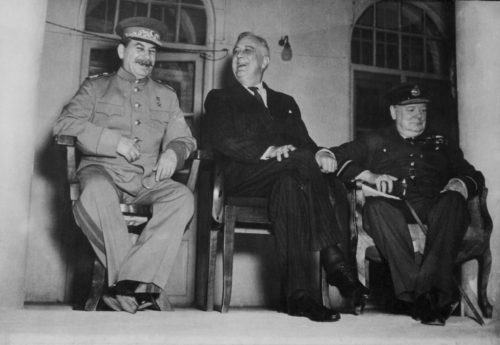
From the Teheran Conference, Stalin, Roosevelt , Churchill. From the archive of the Museum of Yugoslavia
At the Teheran Conference between Stalin, Roosevelt and Churchill, it was decided to provide assistance to the partisans in Yugoslavia. Thus Tito’s movement was recognized as a part of the anti-fascist coalition.
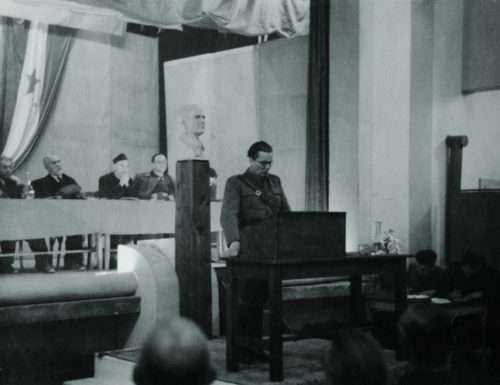
From the second session of the AVNOJ
The second session of the AVNOJ was held in Jajce, Bosnia, where some key decisions for defining the future of post-war communist Yugoslavia were made. AVNOJ was named the supreme legislative body, National Committee for the Liberation of Yugoslavia, that represented the government, was formed; it was decided that Yugoslavia should be reorganized according to a federal principle and King Petar II was banned from the country until the final decision on the method of rule.
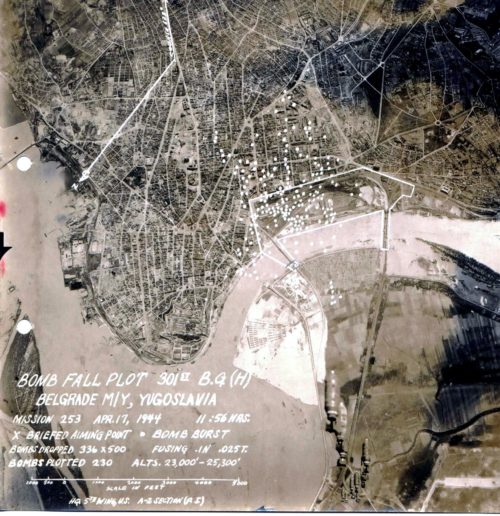
Bomb fall plot, Belgrade
Allied forces bombed Belgrade eleven times between April and September. In this time, Belgrade suffered the greatest destruction during the Second World War.
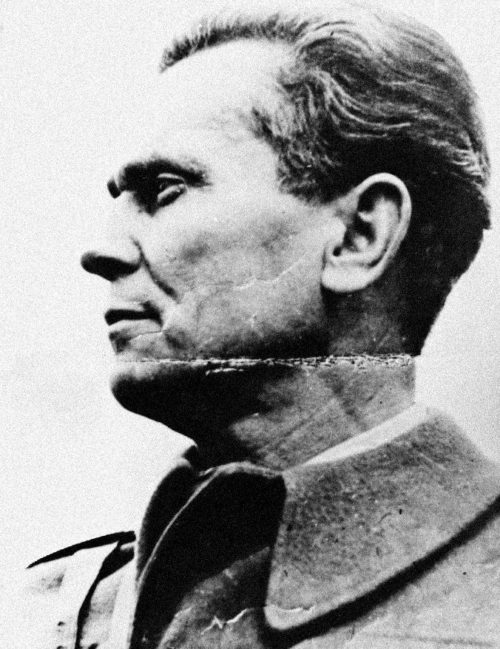
Photo of Josip Broz Tito worn by German soldiers during the action
German action, the Raid on Drvar, was executed under code name the Operation Knight’s Move, with the aim was to capture and liquidate Josip Broz Tito, as the leader of the partisan movement in Yugoslavia. The air raid took place on May 25, 1944.
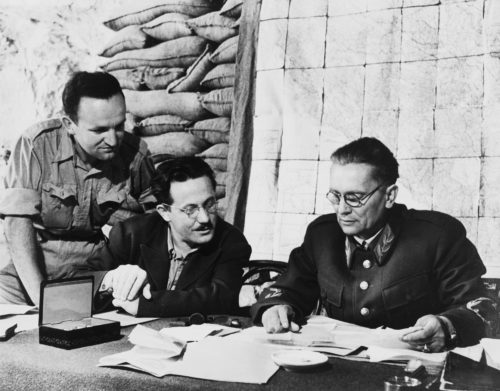
Vlado Bakarić, Edvard Kardelj and Josip Broz Tito in Vis
The new Royal Government was formed in London and Ivan Šubašić became its prime minister. General Mihailović was dismissed from duty of the military minister. An agreement between partisan National Committee of Liberation of Yugoslavia and the Royal Government was concluded in Vis, the so-called Tito-Šubašić agreement. The Royal Government recognized the achievements of the National Liberation Struggle and refused further support to the movement of Draža Mihailović.
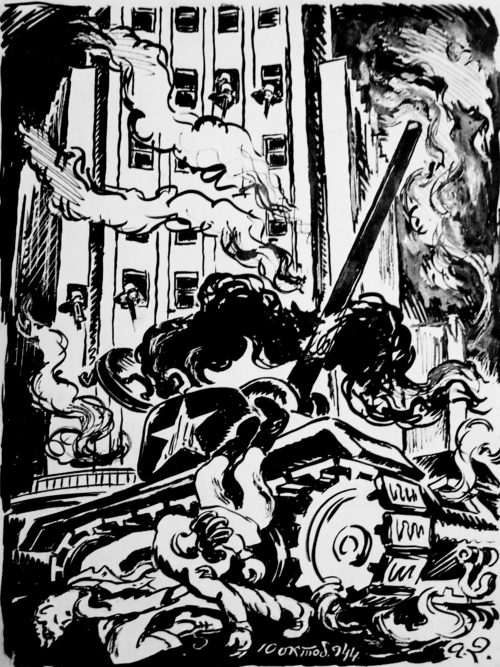
Aleksandar Deroko, Fighting for Liberation of Belgrade, 1944. From the collection of the Museum of Yugoslavia
With the help of the Red Army, units of the National Liberation Army liberated the eastern parts of Yugoslavia, as well as Belgrade, on October 20. By the liberation of Belgrade and Serbia, in the fall of 1944, the struggle for the final liberation of the country began. The organized resistance of the enemy ceased only on May 15, 1945.
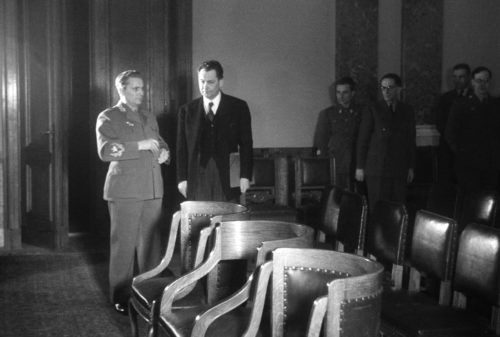
Tito and Šubašić
Provisional Government of the Democratic Federal Yugoslavia was formed on March 7, 1945. The Government was formed by representatives of the National Committee for the Liberation of Yugoslavia and the Royal Government. In this way, the agreement Tito-Šubašić was embodied and Yugoslav revolution was recognized before the end of the war.
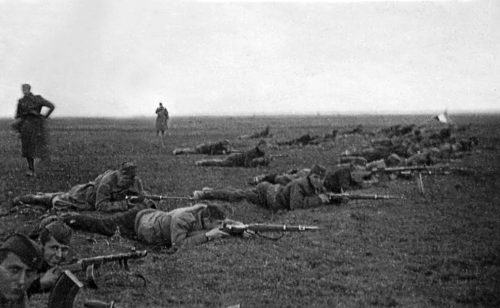
Soldiers in position, The Syrmian Front, March 5, 1945. From the collection of the Museum of Yugoslavia
The Syrmian Front was broken through on April 12, after which units of the Yugoslav army fought until the final liberation of the country. The final battle was followed by punishment of units’ members who fought on the side of the occupators.
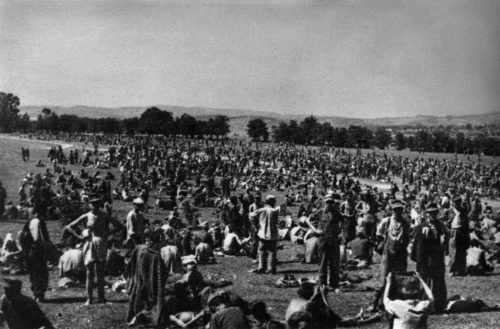
Germans, Ustashas, Chetniks and Home Guards gathered in Maribor from where they were dispatched to the internment camps. 1945.
Liquidation of captured members of the collaborationist and anti-communist formations, who were retreating along with the German army, began in Slovenia.
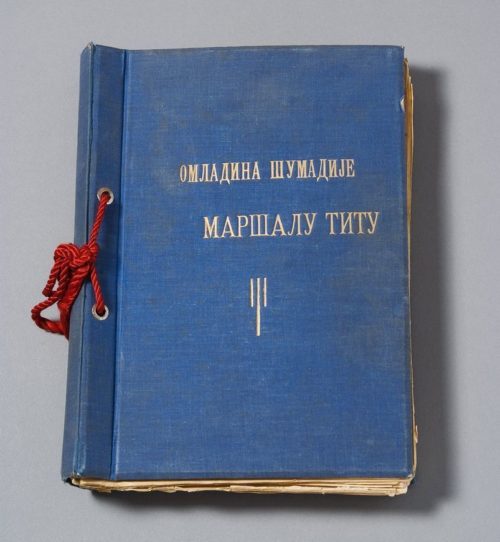
The Blue Book, in which 15,000 signatures of Kragujevac youth were collected and handed over to Josip Broz Tito on May 25, 1945
At the suggestion of the young of Kragujevac, “Tito’s Relay” was established and thus began mass celebration of the birthday of Josip Broz Tito, on every May 25.
Courtesy of Filmske novosti
The list of the National Front, led by the Communists, won a landslide victory in the elections held on November 11. Already on November 29, the Constituent Assembly proclaimed the abolition of the monarchy, after which Yugoslavia became a republic.
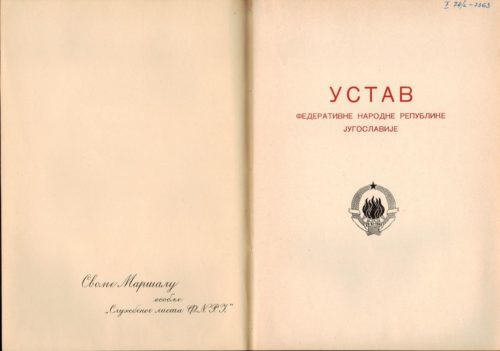
Front page of the Constitution, from the collection of the Museum of Yugoslavia
The first Constitution of the Federal Republic of Yugoslavia was adopted on January 31. The state became a federation of six republics and two autonomous regions, but the arrangement was based on the so-called democratic centralism, modeled on the Constitution of the USSR from 1936.
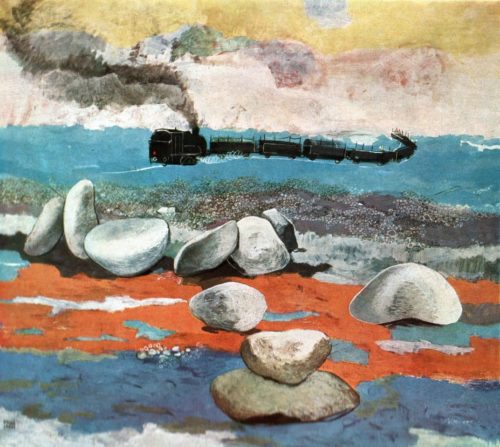
Krsto Hegedusic, "Brcko-Banovici Railway", 1956
The first youth work action was organized. Over 60,000 young people from the country and 1,000 from abroad built the railway Brčko-Banovići, 92 km long, in seven months.
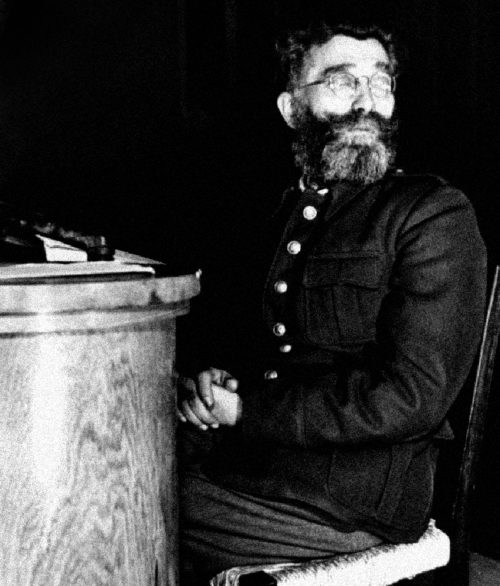
Dragoljub Mihailović during the trial, from the collection of the Museum of Yugoslavia
General Mihailović was sent to trial that ended on July 5 by passing a death sentence.
Edvard Kardelj speech in Trieste
Yugoslavia signed a peace treaty with Italy in Paris. The City of Trieste and the northwestern part of Istria, which were the subject of dispute between the two sides, were named the Free Territory of Trieste. The Yugoslav side said that it did not renounce the rights to this territory.
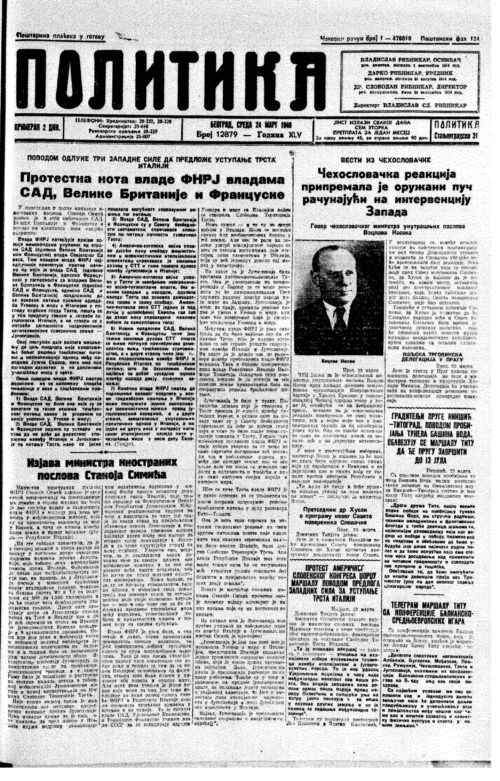
Front page of the newspaper "Politika"
The US, Britain and France proposed the USSR to revise the peace agreement with Italy, regarding the Free Territory of Trieste, which would belong to Italy. Yugoslavia submitted an official protest
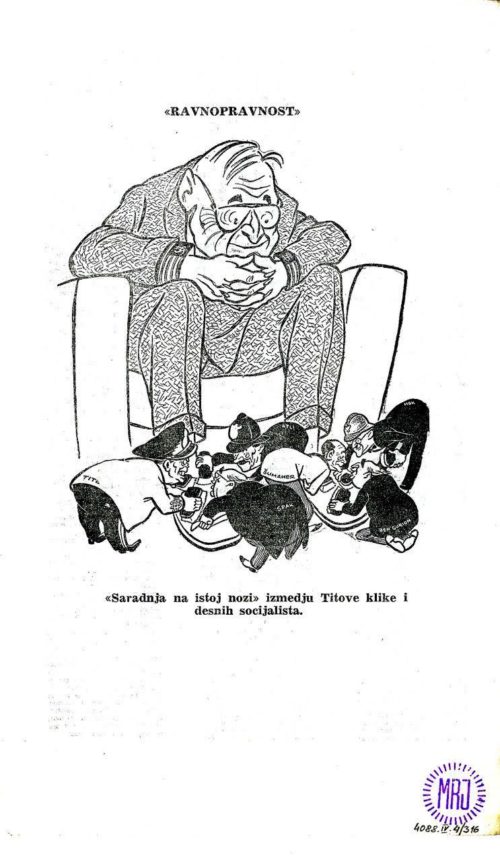
Cartoon of Josip Broz Tito while cleaning shoes of US President Dwight Eisenhower. From the collection of Museum of Yugoslavia
At the second session of the Cominform in Bucharest, resolution which condemned the work of the Yugoslav Communist Party was passed because of deviations from a uniform and international socialist front. This caused a months-long conflict between Stalin and Tito public.
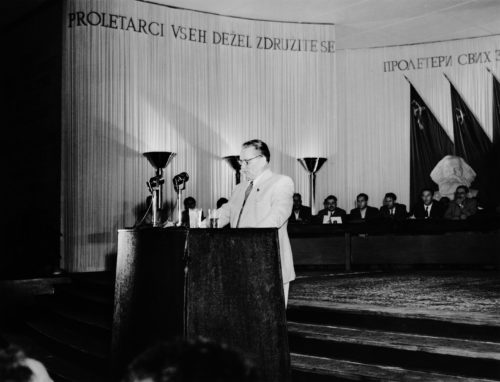
Josip Broz Tito reads a paper at the Fifth Congress of the Communist Party of Yugoslavia
The Fifth Congress of the Communist Party of Yugoslavia was held, the first one after the war. The Congress rejected the Cominform resolution and gave support to the Central Committee of the Communist Party of Yugoslavia in defense of the independence of Yugoslavia. The settling accounts with the internal opposition, the so-called “ibeovci”, began soon.
Excerpts from Goli otok documentary, directed by Darko Bavoljak, production: Art De Facto, Croatia, 2012, and from the talks recorded in the project Personal memories of wars and other forms of political violence, from 1941 to date, produced by Documenta - Centre for Dealing with the Past, Croatia, 2010.
After the conflict between Tito and Stalin in 1948, there was a rift within the Party and those who pleaded for Cominform were punished. Convicted as Stalin’s supporters, they were prosecuted and imprisoned in the camp on the island in the northern Adriatic (Croatia) known as Goli otok. From 1949 to 1958, according to data stored in the Croatian State Archives, 16,731 persons were “administratively directed to community work”, of which 450 did not survive.
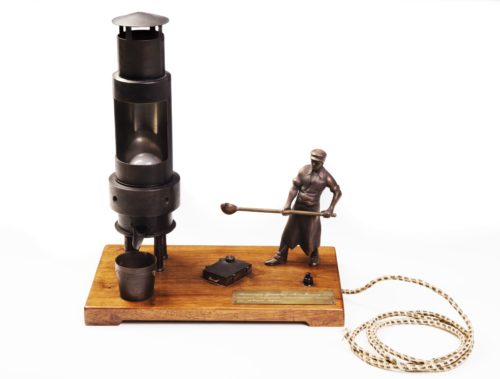
Desk lamp with a scale model of a smelter and an image of a moulder, a gift from the railway men of Yugoslavia, who have met the objectives of the five-year economic plan in just four years. From the collection of the Museum of Yugoslavia.
The Basic Law on State Enterprises and Higher Economic Associations was adopted by work collectives, legalizing the workers’ self-management. Workers councils, in theory, became the main bodies in management of production and income distribution, although the country, i.e. the Party still had a decisive influence on the organization and operation of a company. The idea of workers’ councils and self-management was a political and social alternative to the Stalinist centralism and state-ownership, which also revived the revolutionary-democratic self-government from the period of war.
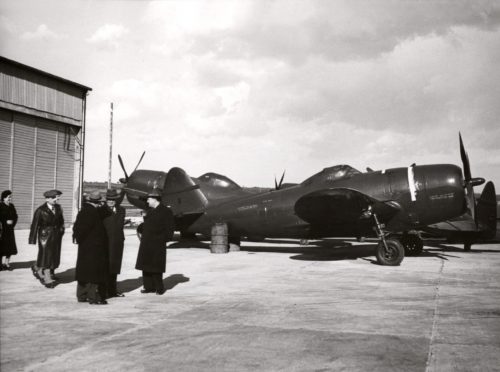
First shipment of airplanes from USA in airport Pula. From the collection of the Museum of Yugoslavia
The US government agreed with Yugoslavia on providing urgent aid, according to the law of the previous year. American assistance was the result of Yugoslavia’s breakup with Stalin and the assessment of the US government that it is in its interest to help Tito to maintain his leadership.
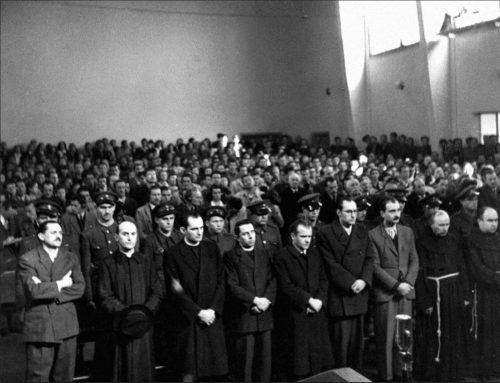
Alojzije Stepinac during the trial
Yugoslavia broke up diplomatic relations with Vatican because of the nomination of Cardinal Alojzije Stepinac, whose cooperation with the Ustasha regime provoked controversy in post-war Yugoslavia, as well as because of the campaign related to Trieste, that was formally annexed to Italy in this year. In the background of these individual incidents, there was a lasting refusal of the Roman Catholic Church to come to terms with the denial of the special status of Vatican by the Yugoslav authorities, because such status was not in accordance with the principle of church and state separation.
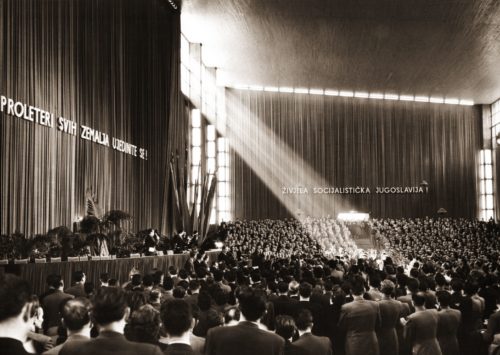
The Sixth Congress of the Communist Party of Yugoslavia. From the collection of the Museum of Yugoslavia
The Sixth Congress of the Communist Party was held. The Congress adopted new measures of liberalization, reflected in the new name of the party – the League of Communists of Yugoslavia.
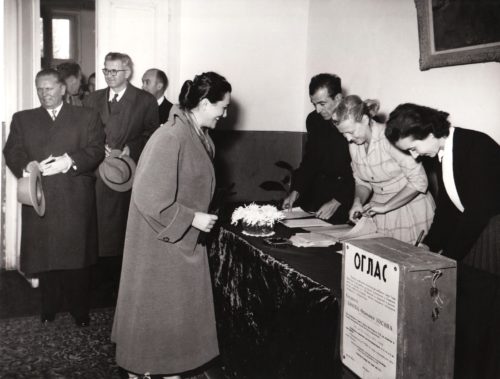
Jovanka Broz on the election day, 22.11.1953.
The Constitution Act, which amended the Constitution from 1946, was adopted. Self-management was declared as the basic model of social and economic regulation, and the function of the President of the Republic, who was also the president of the federal government, was introduced. Josip Broz Tito was elected to this position.
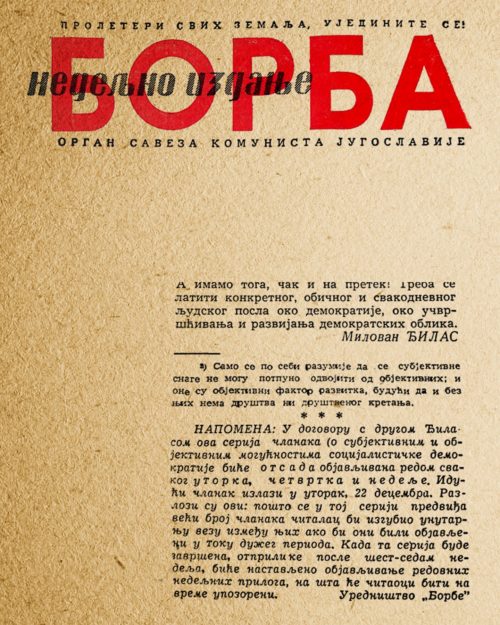
Newspaper Borba
The Party newspaper Borba published a series of articles by the biggest party ideologists, Milovan Đilas, who criticized Yugoslav leadership and its ethics.
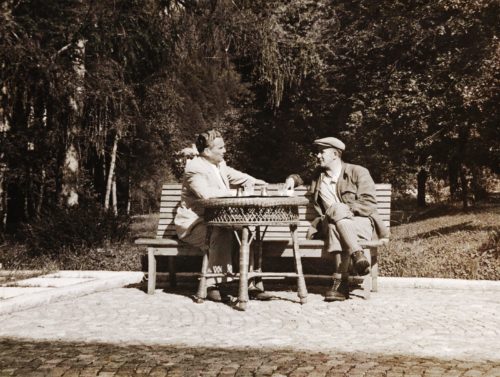
Milovan Đilas and Josip Broz Tito, Bled 1949
At the Third extraordinary plenum of the Central Committee there was a showdown with Đilas, the most famous dissident of Tito’s era. His writings were condemned, and the author was dismissed as a promoter of anti socialist operations. Đilas was relieved of all functions in the League of Communists, and was later arrested. He served a prison sentence in Sremska Mitrovica.
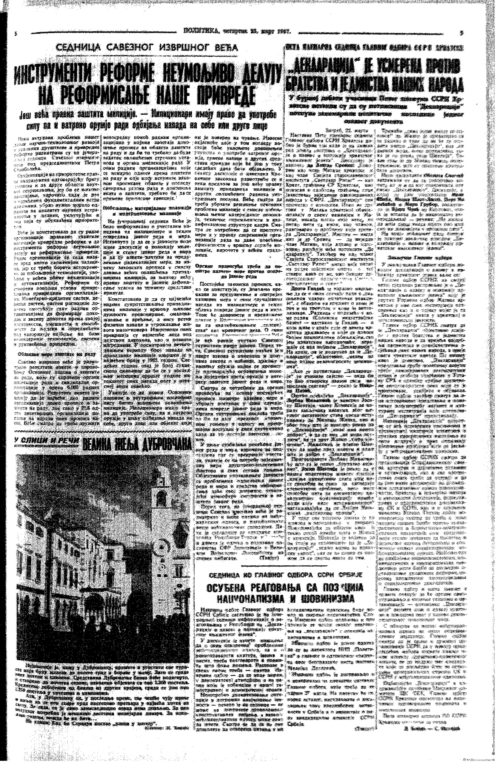
Newspaper Politika
The Novi Sad Agreement, which was signed by prominent Serbian and Croatian linguists and writers, emphasized the equality of Serbian and Croatian languages, alphabets, Cyrillic and Latin, as well as two ways of pronunciation – ekavian and ijekavian.
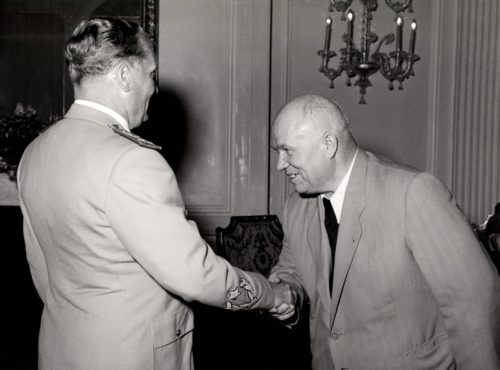
Josip Broz Tito and Nikita Khrushchev
The Soviet delegation, headed by Nikita Khrushchev, arrived in an official visit to Belgrade. This event, known as the “Soviet Kanose”, referred reconciliation between the two countries, but not the return of Yugoslavia to the Soviet model of socialism.
This was followed by recognition of the existence of various ways in the construction of socialism and the principle that the Workers’ Party, as well as the country, should cooperate on an equal basis was emphasized.
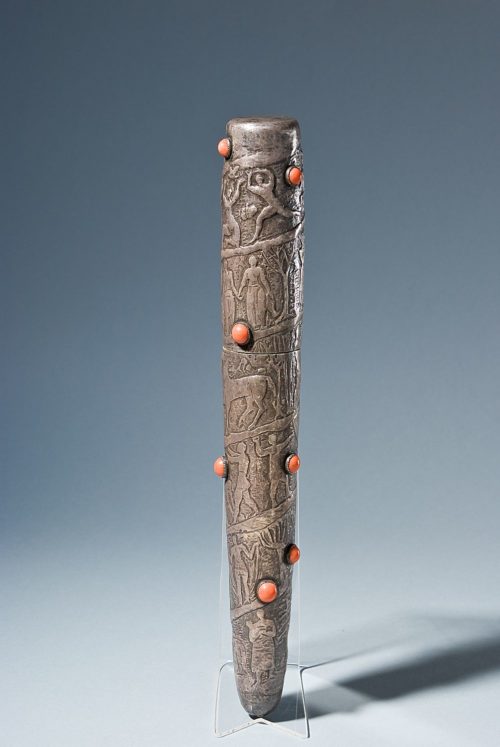
Relay baton from 1957. From the collection of the Museum of Yugoslavia
Tito’s Relay became the Relay of Youth, and Tito’s birthday, May 25, was declared the Day of Youth.
Courtesy of Filmske novosti, Filmske novosti No. 22
The main event of the manifestation were the mass games (“slet”) on the stadium of the Yugoslav National Army (JNA) in Belgrade, which ended with the handing of the federal relay baton over to Tito.
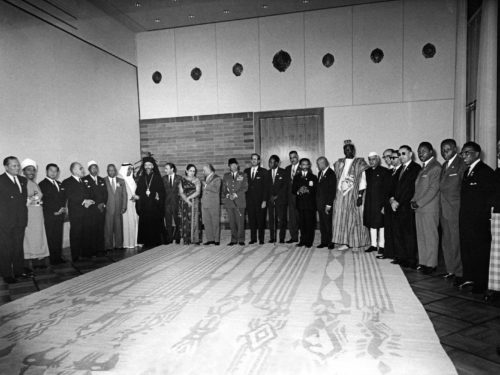
Šefovi delegacija na Prvoj Konferenciji nesvrstanih u Beogradu.
The first conference of state leaders and governments of non-aligned countries was held in Belgrade. The declaration, which emphasized the need for exclusion of war as a means of solving international disputes, affirmed policy of peaceful coexistence and promoted the importance of non-alignment as an alternative bloc division of the world that threatened the world peace, was adopted. Yugoslavia positioned itself as a leader and founder of the Non-aligned Movement, which would remain a permanent determinant of Yugoslav foreign policy.
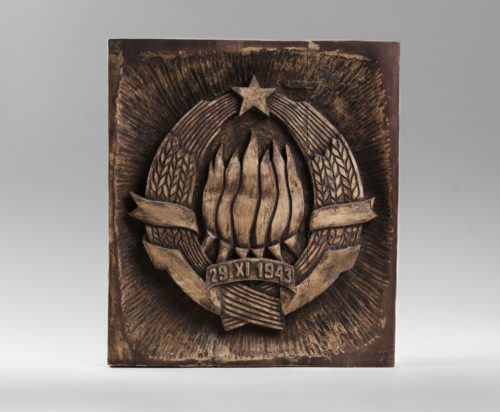
Coat of arms of Socialist Federal Republic of Yugoslavia (SFRY)
The new Federal Constitution was adopted and the state was defined as the Socialist Democratic Union, as an expression of tendency to Marxist withering away of the state. The function of the president of the Federal Executive Council and name of the state was changed into Socialist Federal Republic of Yugoslavia (SFRY).
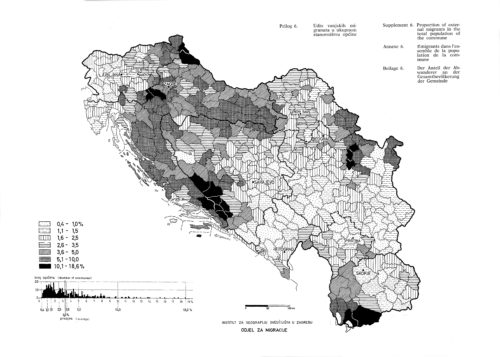
The share of emigrants in the total population of the municipality
An economic reform was initiated and it brought changes in the market economy, which, with certain improvements, led to the increase of social inequalities and unemployment rate as well as to the increasing number of people going to work abroad
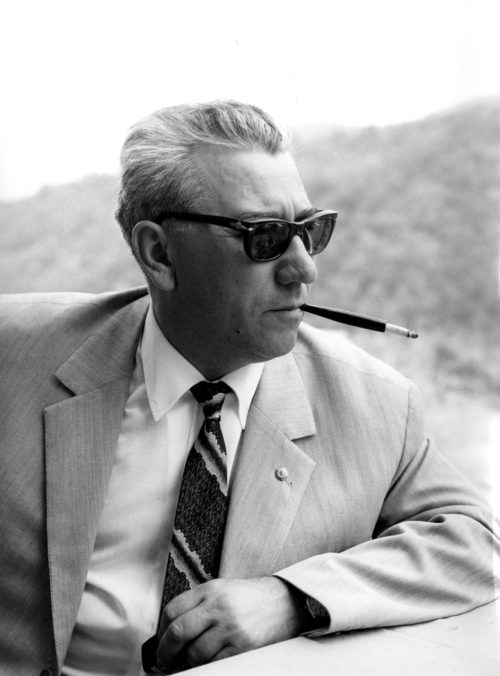
Aleksandar Leka Ranković. From the collection of the Museum of Yugoslavia
The Fourth Plenum of the Central Committee met in Brioni to discuss a situation in the State Security and the charges of wiretapping Tito’s own rooms, as well as of wiretapping other officials without control of the Party, which led to abuse of power. Brioni plenum, in fact, was a showdown with Aleksandar Ranković, the chief officer of the Service and the vice president of the Republic who, having outlined the charges, resigned from all his functions. His fall was wholeheartedly accepted by the forces that tended towards decentralization.
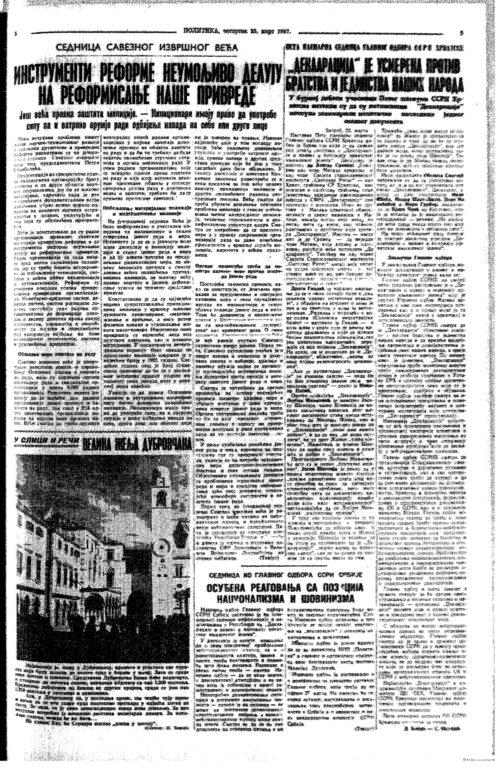
Newspaper Politika
The Managing Board of Matica Hrvatska published a declaration of the name and position of the Croatian language. The reply was given at the annual meeting of the Association of Writers of Serbia, when a group of members submitted a proposal for reflection. Serbian authors assessed the declaration as a political, not a linguistic act. The Party then equally condemned the Declaration and the Proposal as nationalist acts.
Courtesy of the TV Belgrade, Programme Archive
Large student protests held at the University of Belgrade. Students demanded reduction of social inequalities, solving the unemployment problem, stopping the bureaucratization of society and reforms of the University. The most radical slogan was “Down with the red bourgeoisie” and clashes erupted between protesters and the police.
Courtesy of the TV Belgrade, Programme Archive
In Croatia, there was a strengthening of nationalist movements (mass movement – MASPOK) that, led by the party leadership, tended to legitimize the Croatian national identity and sought to improve the position of Croatia in the Federation.
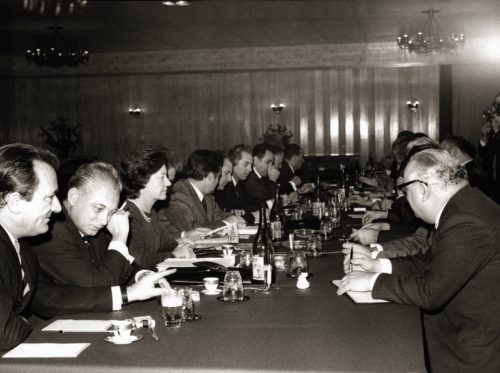
The twenty-first session of the Presidency of the LCY. From the collection of the Museum of Yugoslavia
The twenty-first session of the Presidency of the LCY was held in Karađorđevo, where Tito condemned nationalist politics of Croatian leadership. A large number of resignations and shifts in the Croatian League of Communists ensued, and the leaders of MASPOK (mass movement – Croatian Spring) were sentenced to prison.
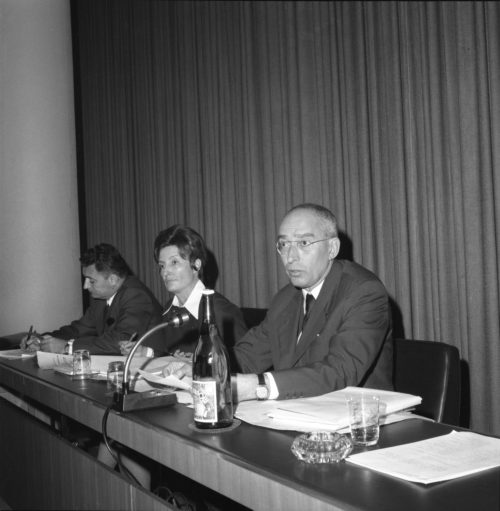
Latinka Perović and Marko Nikezić
There was a clash with supporters of liberal economic and political reforms, first in the Serbian Party leadership, and then in other republics.
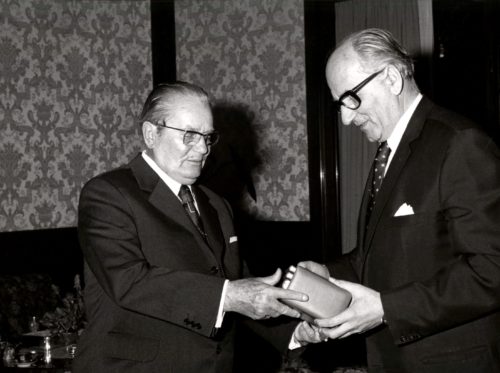
Josip Broz Tito during the proclamation of the Constitution. From the collection of the Museum of Yugoslavia
The new Federal (SFRY) Constitution was ratified. The Federation was reformed by establishing the principle of the statehood of republics through which “voluntarily united nations and nationalities” enjoyed their rights and expressed their will. The right to “self-determination up to secession” was established. Federal State approached the confederal arrangement because all decisions, including the amendment of the Constitution, could be made only by consensus of the republics and provinces. The provinces became directly represented in the Federation, as its constituent elements. Social ownership figured as the main characteristic of the social system, so SFRY, among other things, was defined as a community based on self-government and the working class, i.e. as a socialist, democratic community of working people and citizens. Tito was elected a life-long president of SFRY and the League of Communists of Yugoslavia. The institution of collective Presidency of Yugoslavia was founded, composed of nine members – a representative from each of the republics and provinces and a representative of the League of Communists.
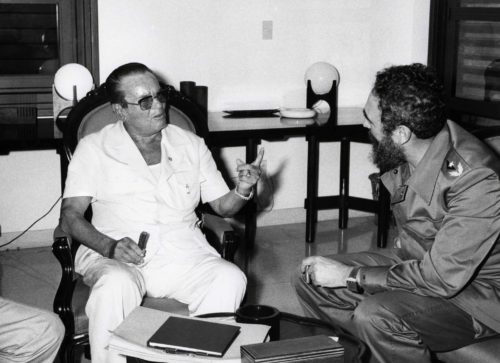
Josip Broz Tito and Fidel Castro
At the VI Conference of Non-Aligned Countries in Havana, J. B. Tito had his last significant diplomatic performance. He managed to dissuade Fidel Castro, the President of Cuba, from his intention to closely tie the Non-Aligned Movement to the Soviet Union.
Courtesy of the TV Belgrade, Programme Archive
Josip Broz Tito died on May 4. In accordance with the Constitution, the function of the collective head of state was taken over by the Presidency of the SFRY and Lazar Koliševski as the first chairman. The seven-day national mourning was declared. Tito’s funeral in the House of Flowers, on May 8, was attended by 80 state and 60 parties’ delegation of the highest level, making it one of the most visited leaders’ funerals of the 20th century.
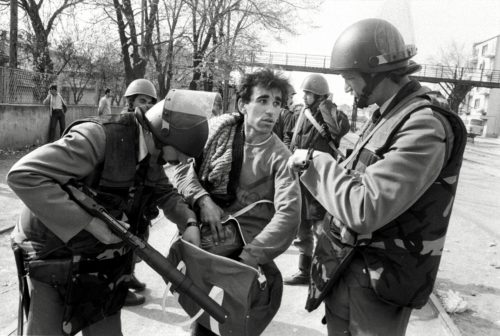
Courtesy of the artist Imre Szaba
The mass students’ demonstrations erupted in Kosovo when protesters clashed with the police. From the initial request for the improvement of student standards protesters quickly expressed demand “Kosovo –Republic.”
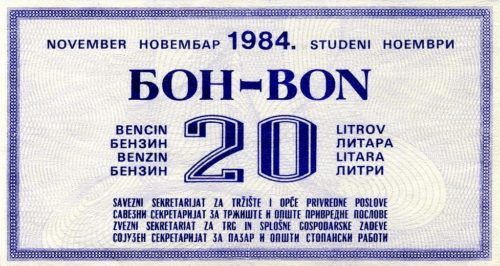
Gasoline voucher
Due to the economic situation and the indebtedness of the country, austerity measures were introduced, including the purchase of gasoline vouchers.

Vučko, the Olympic mascot of the 1984 Winter Olympics in Sarajevo
From February 8 to 19, the fourteenth Winter Olympic Games were held in Sarajevo and it was the biggest sporting event in the former Yugoslavia.
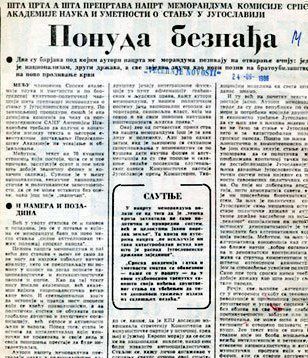
Article from Novosti
The mass students’ demonstrations erupted in Kosovo when protesters clashed with the police. From the initial request for the improvement of student standards protesters quickly expressed demand “Kosovo –Republic.”
Емисија SFRY for beginners, 2012, Author: Radovan Kupres
Agrokomerc affair emerged, the biggest financial scandal in Yugoslavia, that led to political destabilization in Bosnia and increased inflation in Yugoslavia.
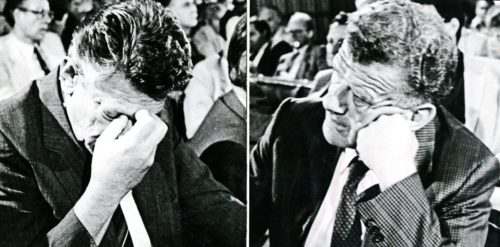
Ivan Stambolić
At the VIII session of the Central Committee of the League of Communists of Serbia, the current led by Slobodan Milošević, the president of the League, won over the current led by Ivan Stambolić, the president of the Presidency of Serbia.
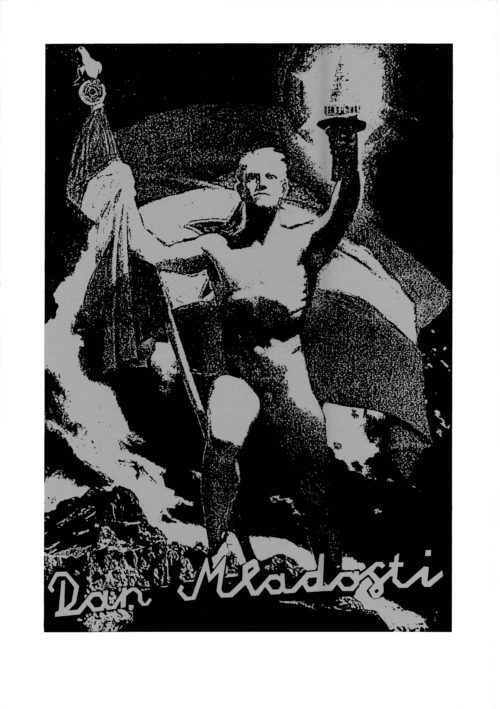
New Collectivism, Youth Day poster, design concept. League of Socialist Youth of Yugoslavia, Courtesy of the artists.
There was a scandal regarding the conceptual design posters for the Day of Youth celebration. The official winner of the competition was Novi kolektivizam, a designers’ branch of the Slovenian art group Neue Slowenische Kunst. The winning poster was designed on the model of advertising images of the German-artist, Richard Klein, from 1936, wherein the substrate Nazi symbols (German eagle and Nazi flag with swastika) were replaced by the socialist symbols (dove of peace and five-pointed star with tricolor). Poster and relay baton were not made by this design because the original template was discovered after the winning. That was the last time the Relay of Youth was carried.
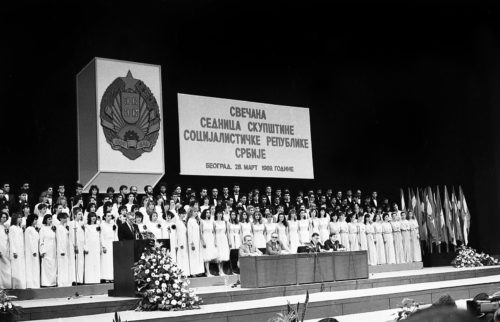
Amendments to the Constitution of the Republic of Serbia were announced in Belgrade, by which veto rights were taken away from the provinces and narrowed the legislative, administrative and judicial power they had under the Constitution of 1974. The proclamation provoked clashes on the streets of Kosovo and Metohija.
Sequence from the Gazimestan speech
To mark 600 years since the Battle of Kosovo, a massive rally was organized at Gazimestan. With the speech he gave on June 28, in front of hundreds of thousands of people, Milošević strengthened his leading position on the Serbian political scene.
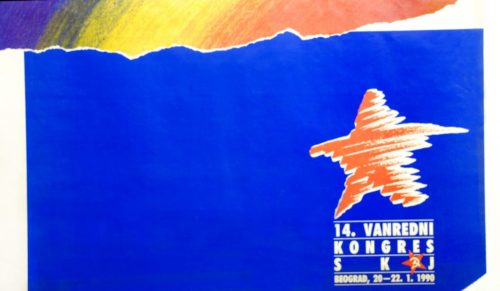
Poster for the XIV Extraordinary Congress
The XIV Extraordinary Congress of the LCY, which was the last one, was held in Belgrade. The Slovenian delegation proposed confederalisation of LCY and termination of political trials in Kosovo, but it remained in minority. The proposal of the Serbian delegation was to rearrange Yugoslavia as a country with full legal and state subjectivity, through the adoption of a new constitution, and it received the most votes. Slovenians refused to accept marginalization on the basis of democratic centralism and left the Congress. Croatian delegations followed their footsteps, after which the Congress stopped working. Thus, the Congress marked de facto disintegration of LCY.
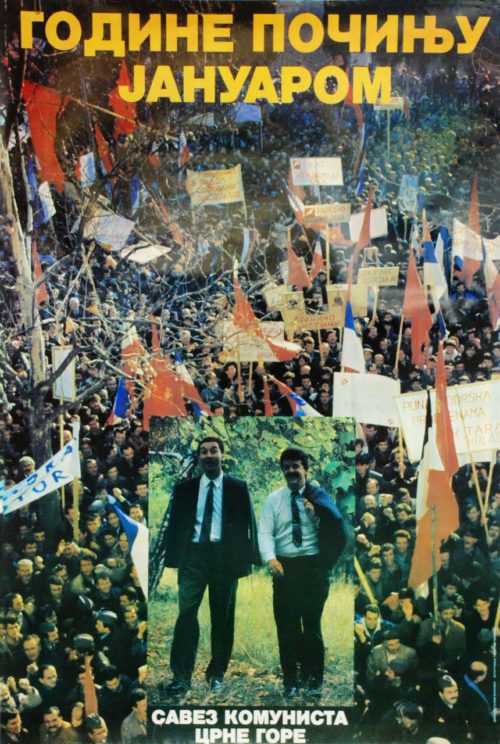
Poster "The League of Communists of Montenegro"
During the year, multiparty elections were held in the republics in which the opposition won, except in Montenegro and Serbia, where the reformed communists retained power.
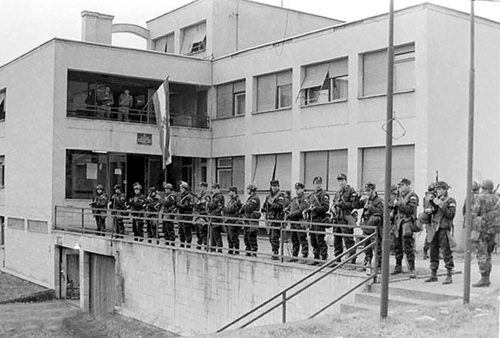
Author Tony Hnojčik. Courtesy of the artist
The clashes between the Croatian police and local Serbs broke out in Pakrac in which Yugoslav People's Army intervened for the first time, positioning itself between the warring parties. The first armed clashes erupted, growing into large-scale war,
Interview with the soldier
In Croatia and Slovenia, the referendums were held and the majority of citizens voted for independence. The Federal Executive Council overturned the decision of the Slovenian and Croatian Parliament on secession and issued the order to take control of the border crossings. The next day, armed clashes erupted between the Yugoslav People’s Army and Slovenia. The secession of Slovenia was followed by the so-called Ten-day War.
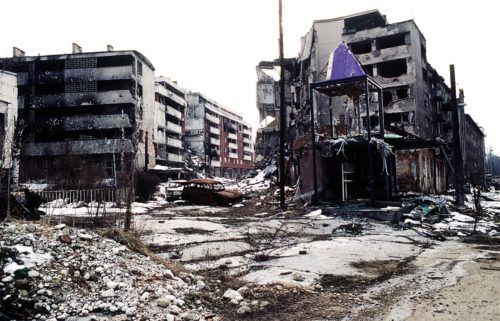
Damaged buildings, Sarajevo
The majority of citizens voted for independent and comprehensive Bosnia on referendum. The Serbs did not accept the result of the referendum and declared Republika Srpska. In April, the war in Bosnia started, the bloodiest war in the former Yugoslavia.
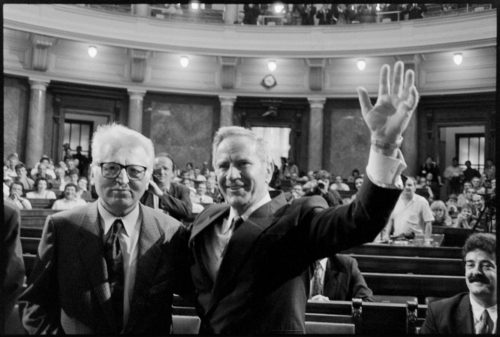
Dobrica Ćosić and Milan Panić
Serbia and Montenegro remained in the community – the Federal Republic of Yugoslavia, which was declared on April 27, and the first president was Dobrica Ćosić, a writer. Due to interference in the conflict in Bosnia and Herzegovina, UN imposed sanctions to Yugoslavia.
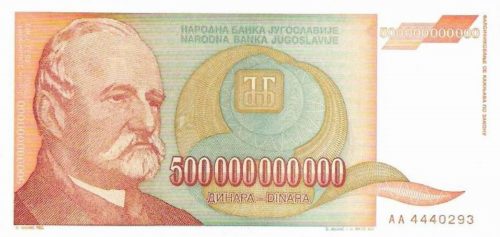
The highest denomination banknote was 500 billion dinars
Hyperinflation in the Federal Republic of Yugoslavia, which began in April 1992, reached its peak and one of the highest rates in the world economic history. In 1993, the daily rate of inflation was 65%, which meant that prices were doubled every 34 hours.
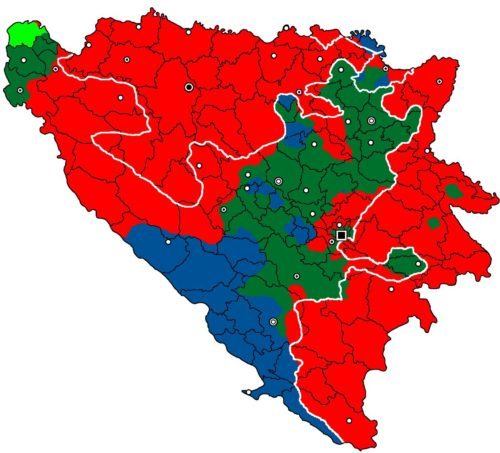
The front lines in 1994, at the end of the Bosniak-Croat war and after the signing of the Washington Agreement. HVO blue, BiH green, Serbs red
The Washington Agreement, that interrupted Croatian-Muslim conflict in Bosnia and Herzegovina and formed the Muslim-Croatian Federation, was signed on March 18.
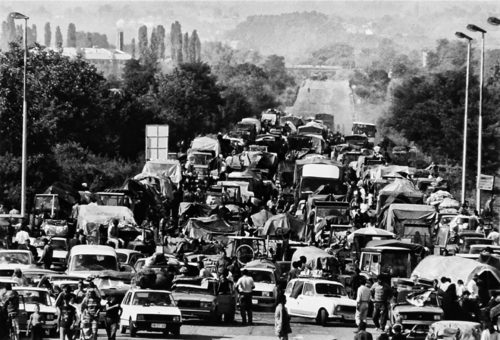
Refugees, Banja Luka at the time of the “Storm”. 05. 08. 1993. Author Tomislav Peternek
Croatian military actions “Bljesak” (Flash) and “Oluja” (Storm) exterminated Serbian Autonomous District in Slavonia and Croatia, and over 200,000 Serbs were forced to leave their homes.
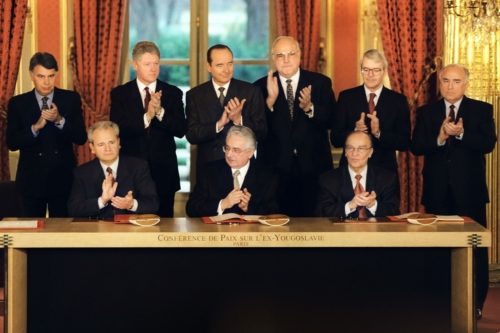
Signing of agreement in Paris.
The agreement that ended the war in Bosnia was signed in the US air base “Wright Patterson” in Dayton, on November 21. Bosnia and Herzegovina survived as an independent state, divided into the Muslim-Croat Federation and Republika Srpska.
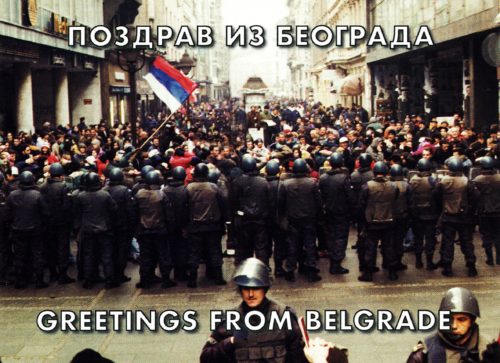
After the local elections, the opposition parties in Serbia organized several months of protests until the regime of Slobodan Milošević recognized that the opposition won the elections in several major cities. They were followed by students’ protest that lasted 117 days.
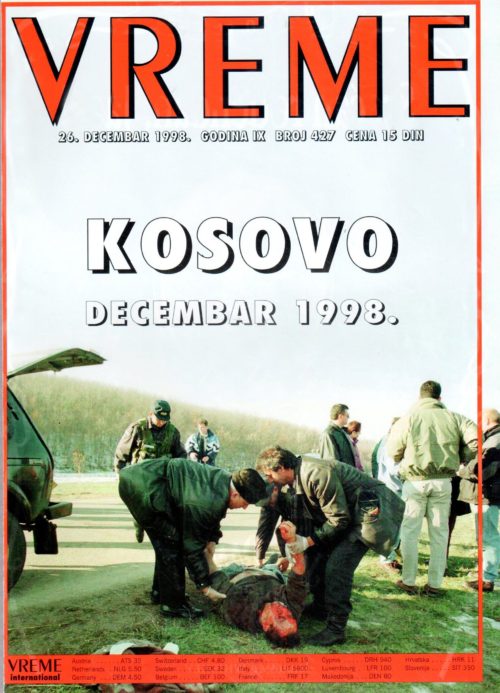
Front page of "Vreme" weekly
The Kosovo Liberation Army began an open rebellion against Serbian rule in Kosovo and Metohija.
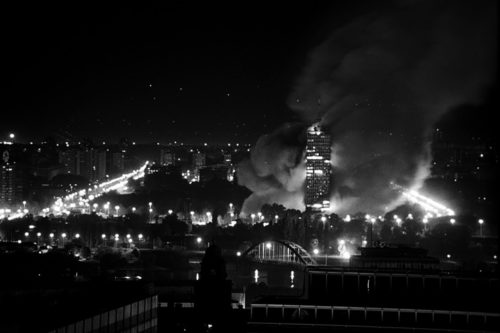
“Ušće” buissenes centar, Belgrade 21. 04. 1999. Courtesy of the author Tomislava Peterneka
After Milošević’s abandonment of peace negotiations with Kosovo Albanians in Rambouillet, NATO began bombing Yugoslavia. The war was ended by the Agreement in Kumanovo, which initiated the international presence in Kosovo.
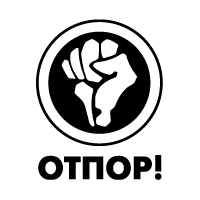
Symbol of the People's Movement Otpor!, which played a significant role in the fall of Milosević
In the elections held on September 24, the opposition candidate for President of the Federal Republic of Yugoslavia, Vojislav Koštunica, defeated Slobodan Milošević, who admitted his defeat only after people took to the streets en masse and occupied the Assembly on October 5.
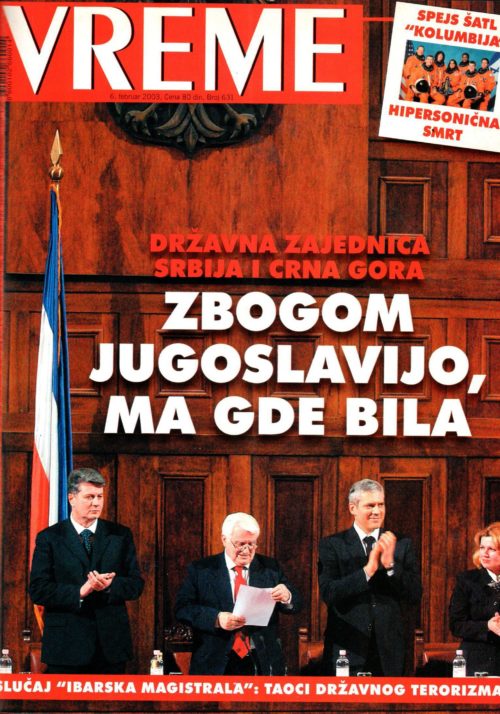
Front page of "Vreme" weekly
Constitutional Charter, that turned the Federal Republic of Yugoslavia into the State Union of Serbia and Montenegro, was adopted on February 4. Sv etozar Marović was elected for the president of the common state, being also the last president of that country.
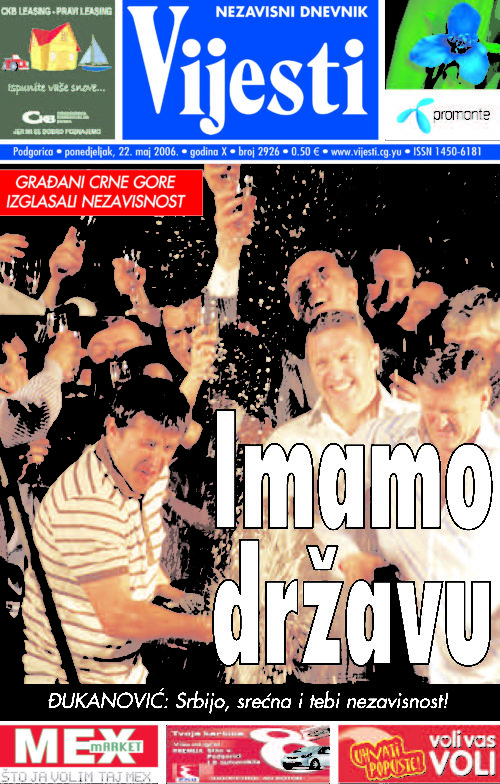
Front page of the newspaper "Vijesti"
A referendum on independence in Montenegro was held on May 21, 2006. After 55.5% of citizens voted for independence, Community of Serbia and Montenegro ceased to exist.
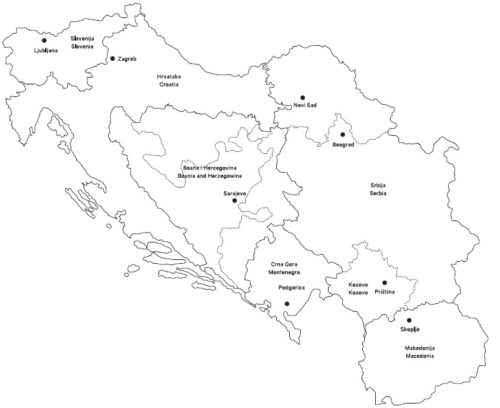
Breakup of Yugoslavia
The Assembly of Kosovo and Metohija unanimously declared Kosovo’s independence from Serbia on February 17. Serbia has not recognized this act.
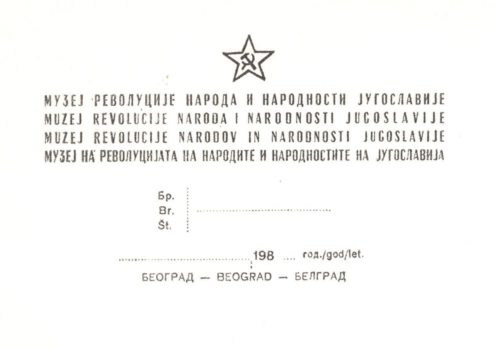
The memorandum of the Museum of the Revolution of Yugoslav Nations and Ethnic Minorities
The Museum of the Revolution of Yugoslav Nations and Ethnic Minorities was created as a result of many years of systematic collecting of objects and documents on the workers' movement and the development of the idea of socialism as the foundation of the new Yugoslav society.
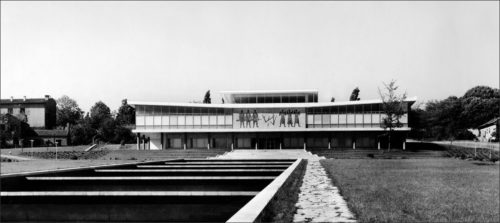
May 25 Museum
For his 70th birthday, Josip Broz Tito received the most imposing gift from the city of Belgrade – May 25 Museum. As a significant example of the high modern and one of the rare examples of total design in the architecture of Belgrade, the building was designed by Mihailo Mika Janković.
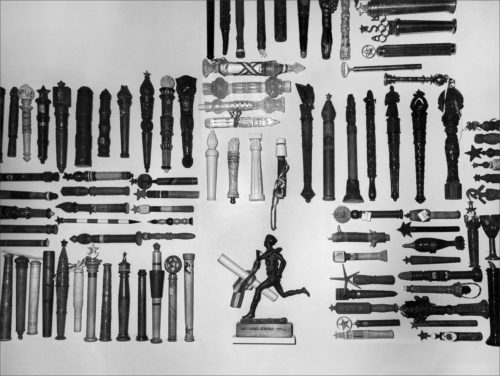
Relay buttons from the first exhibition in the May 25 Museum
The Museum was open to the public with the intention of exhibiting numerous gifts, sent to the president of the SFRY from the country and abroad.
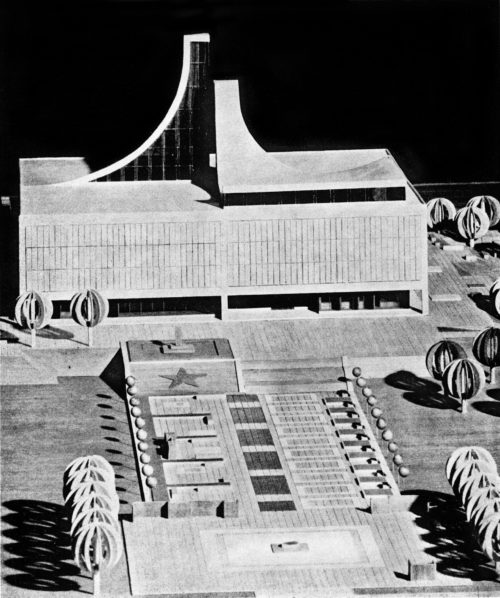
Model of the Museum of the Revolution of Yugoslav Nations and Ethnic Minorities
The work on probing terrain at Ušće was started as a preparation for the implementation of the project of the new building of the Museum of the Revolution of Yugoslav Nations and Ethnic Minorities, according to the project by Vjenceslav Richter, architect from Zagreb. The project has never been realized.
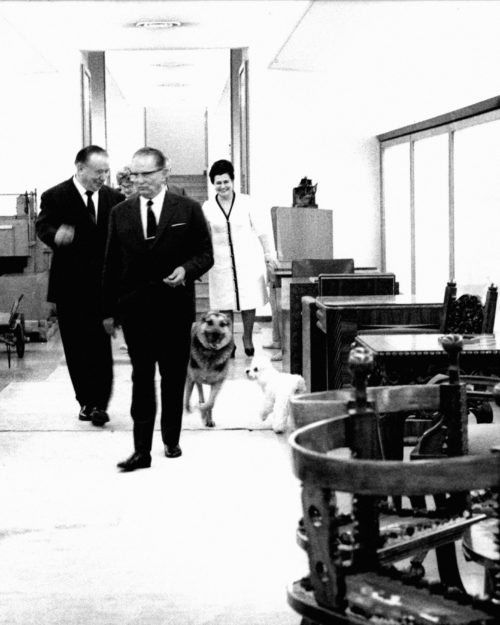
Jovanka and Josip Broz in the Old Museum
In the vicinity of the residence of Josip Broz, according to the solution of the architect Branko Bon, an object was built that was used as a depot for gifts that Tito received during numerous meetings with statesmen and other officials from the country and the world. It also contained gifts that were sent and handed over by Yugoslavs, representatives of various organizations, local communities, associations, and collectives. Over the years, this building has been called the Old Museum.
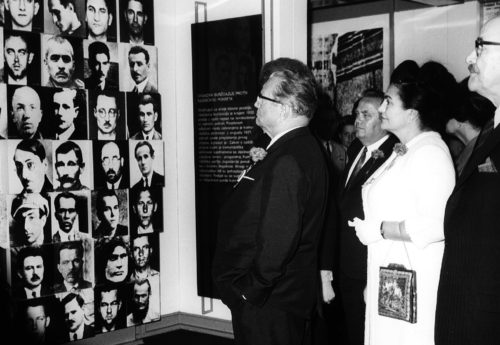
Josip Broz Tito at the opening of the exhibition
On the occasion of marking fifty years since the founding of the Communist Party, an exhibition was set up at the Museum of the Revolution of Yugoslav Nations and Ethnic Minorities, which was opened by Josip Broz Tito. Over time, this exhibition became a permanent display of the Museum, and it was upgraded and completed until 1998 when it was closed for a visit and dismantled.
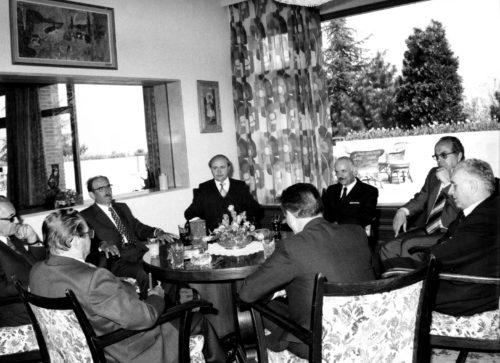
Meeting at the House of Flowers. From the collection of the Museum of Yugoslavia
According to the architectural solution of Stjepan Kralj, the House of Flowers was built, as a winter garden in the immediate vicinity of the residence of Josip Broz. In the central part, there was a garden with a fountain, and the sides were living space with private rooms and a work cabinet.
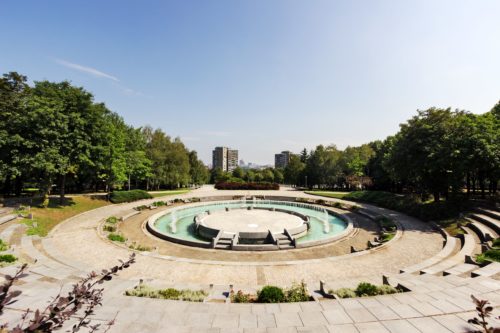
The fountain in front of the Muesum of Yugoslavia
The access plateau of the Museum, with amphitheater and fountain in the middle, received its present look according to the conceptual solution of Branislav and Marija Jovin. The reason for the reconstruction of the original plateau with cascades was the preparation for the formation of a memorial center after Tito’s death, which would serve for getting acquainted with his life and work, and would connect May 25 Museum and Tito’s residential buildings.
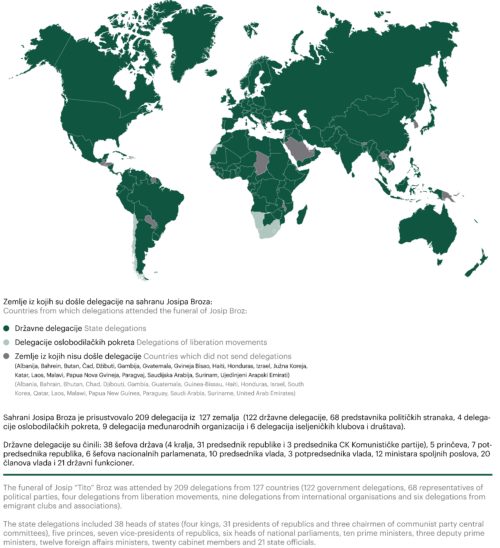
Countries from which delegations attended the funeral of Josip Broz Tito
The House of Flowers was selected as the burial place of Josip Broz Tito. The funeral was attended by 80 state and 60 party top-level delegations, making it one of the largest state funiculars in the 20th century.
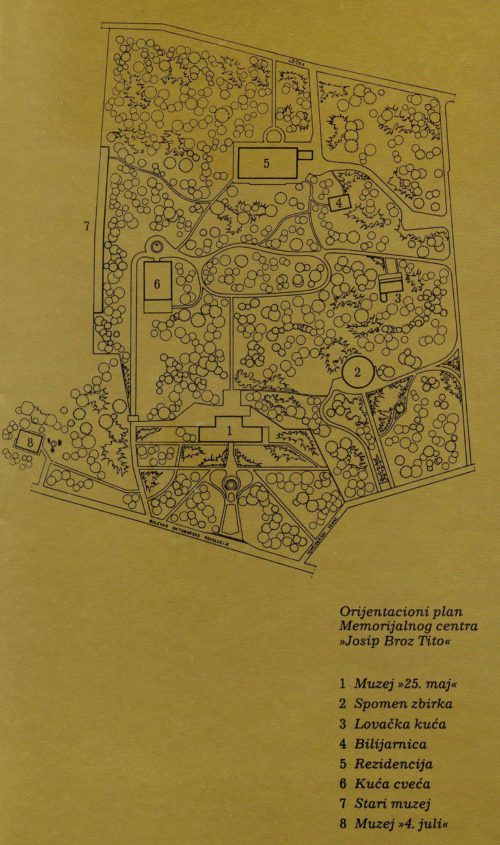
Map of the Memorial Center "Josip Broz Tito"
Memorial Center “Josip Broz Tito” was founded, with a main mission to keep the memory of Josip Broz Tito. The complex memorial unit that was created at the place where Tito lived in Belgrade included 10 buildings (the Entrance Gate, May 25 Museum, the Old Museum, the House of Flowers, Memorial Collection, the Hunting House, the Billiard, Residence, Museum 4th of July, Restaurant Mladost) with a park of sculptures, which were open for visitors. The Center also managed the Birth House in Kumrovec, and later the island of Vanga in Brijuni Archipelago.
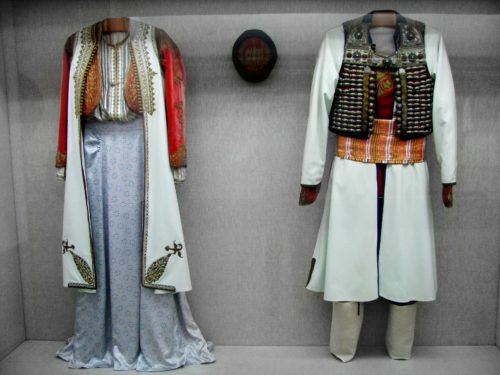
From the exhibition
The former gift storeroom – the Old Museum, was adapted as an exhibition space and open to the public with the display of gifts from the ethnographic collection.
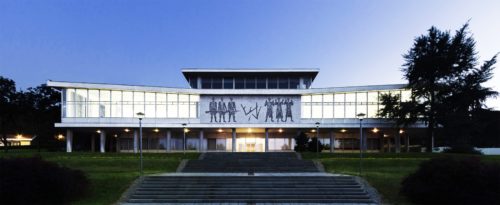
Museum of Yugoslavia
Museum of Yugoslav History was founded by merging the collections of the Memorial Center “Josip Broz Tito” and the Museum of the Revolution of Yugoslav Nations and Ethnic Minorities. Collections of these two institutions served as the basis for creating the new museum, which was supposed to "put Yugoslavia in history" through musealization. In time, the new institution will become the basis of the search for the ways of preserving the Yugoslav heritage.

From the exhibition
After NATO bombing, the exhibition How to Kill a Country? was opened, dealing with the current events.
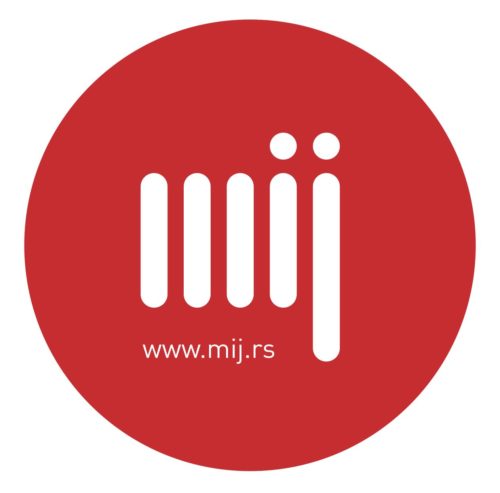
Logo of the Museum of Yugoslav History
The logo of the Museum of Yugoslav History, designed by Mirko Ilić, was created.
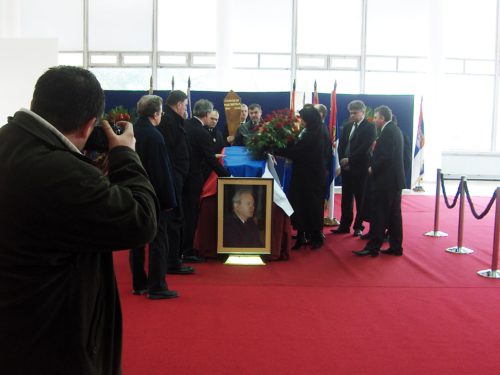
Milošević's remains in the May 25 Museum
After the death of former President Slobodan Milošević, his remains were exhibited at the Museum of Yugoslavia.
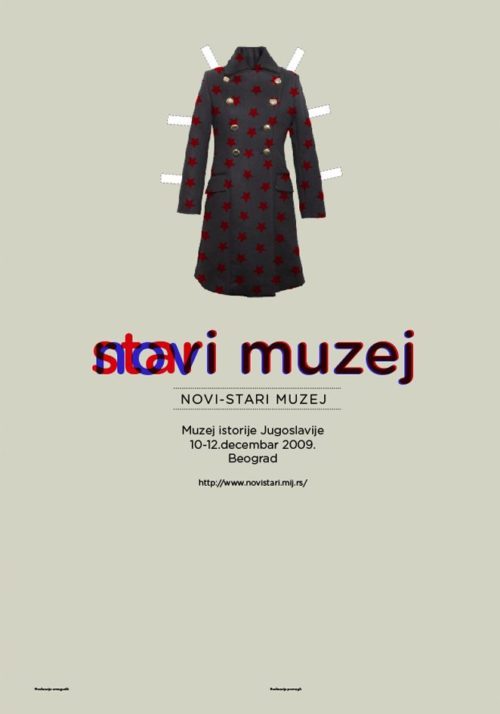
Poster "The New Old Museum"
The conference The New Old Museum was held, with the idea to organize regional activities that will lead to the development of the concept and content of a new permanent display at the Museum of Yugoslav History.
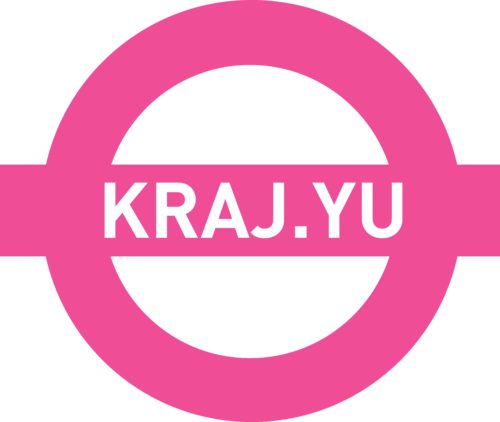
Poster "end.yu"
The Museum of Yugoslav History purchased the first virtual exhibit of .yu domain (Yugoslavia), which officially came out of use and was replaced by .rs (Republic of Serbia).
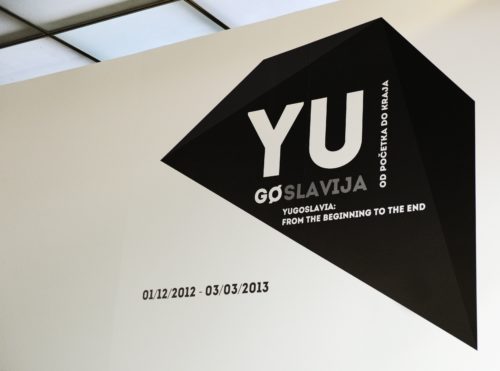
Entrance hall at the exhibition "Yugoslavia from the Beginning to the End"
The exhibition Yugoslavia from the Beginning to the End, which began the work on the new permanent display of the Museum, was opened.
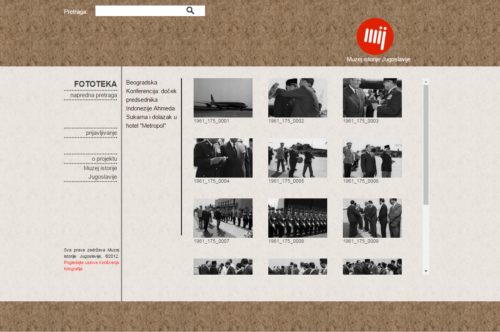
Website foto.mij.rs
The work on digitalization of the collection has started with a project in which 132,000 photographs were digitized, available at www.foto.mij.rs.
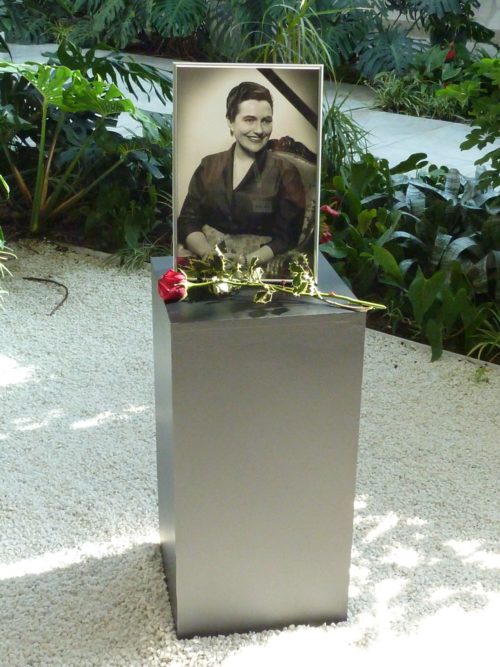
Jovanke Broz's funeral
Tito's wife, the former first lady of Yugoslavia, Jovanka Broz, was buried in the House of Flowers.
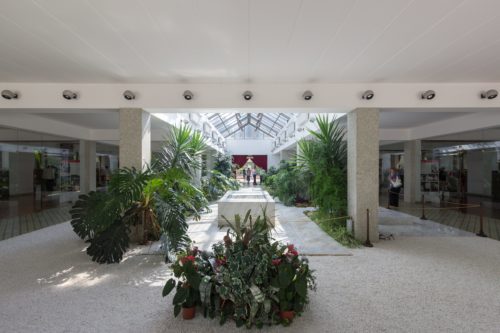
House of Flowers
The Library of Josip Broz Tito was declared a cultural good of great importance.
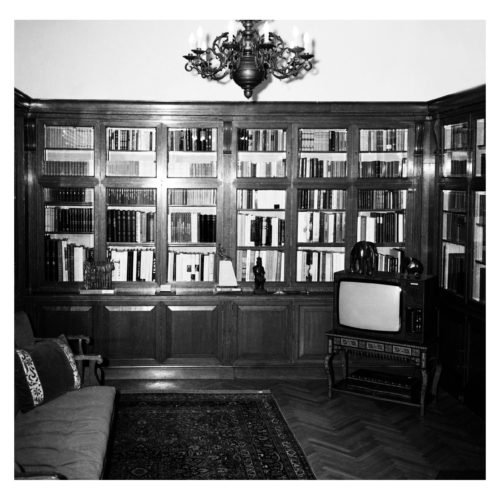
The Library of Josip Broz Tito. From the collection of the Museum of Yugoslavia
The Memorial Library Josip Broz Tito was declared a cultural good of great importance.
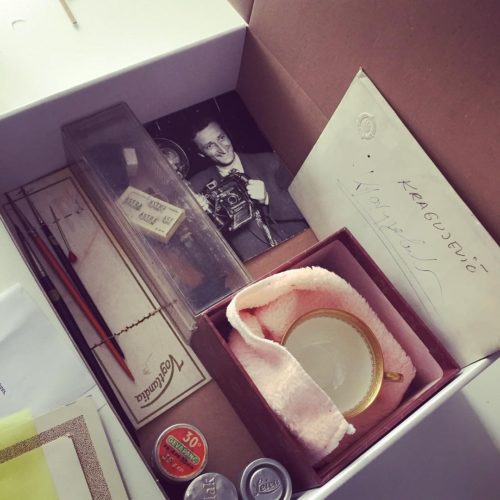
The legacy of Yugoslav photographer Stevan Kragujević
The legacy of Yugoslav photographer Stevan Kragujević was formed, counting almost 10,000 photographs, negatives and private objects.
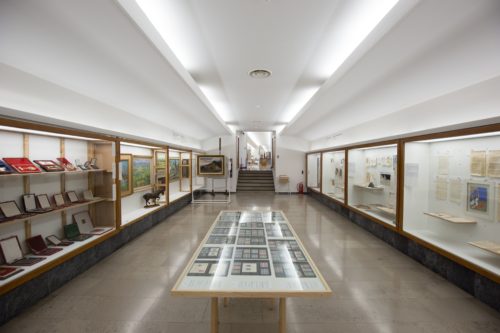
The Storeroom Opens in the Old Museum
The project The Storeroom Opens was launched as an experimental workshop, halfway from the depot to the future permanent display.
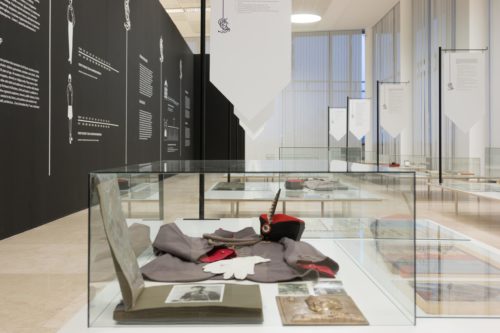
From the exhibition
With the exhibition To Be a Falcon Is to Be a Yugoslav began the research of topics from the period of First Yugoslavia.
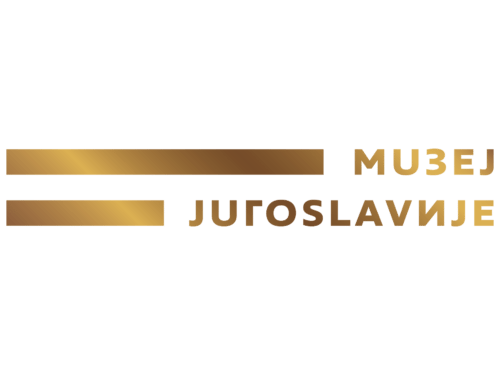
Logotip Muzeja Jugoslavije
Museum of Yugoslav History changed its concept and name and became the Museum of Yugoslavia. This change is a tendency to direct the scope of research and musealization to a wide range of different phenomena that mark Yugoslav heritage and Yugoslav experience.
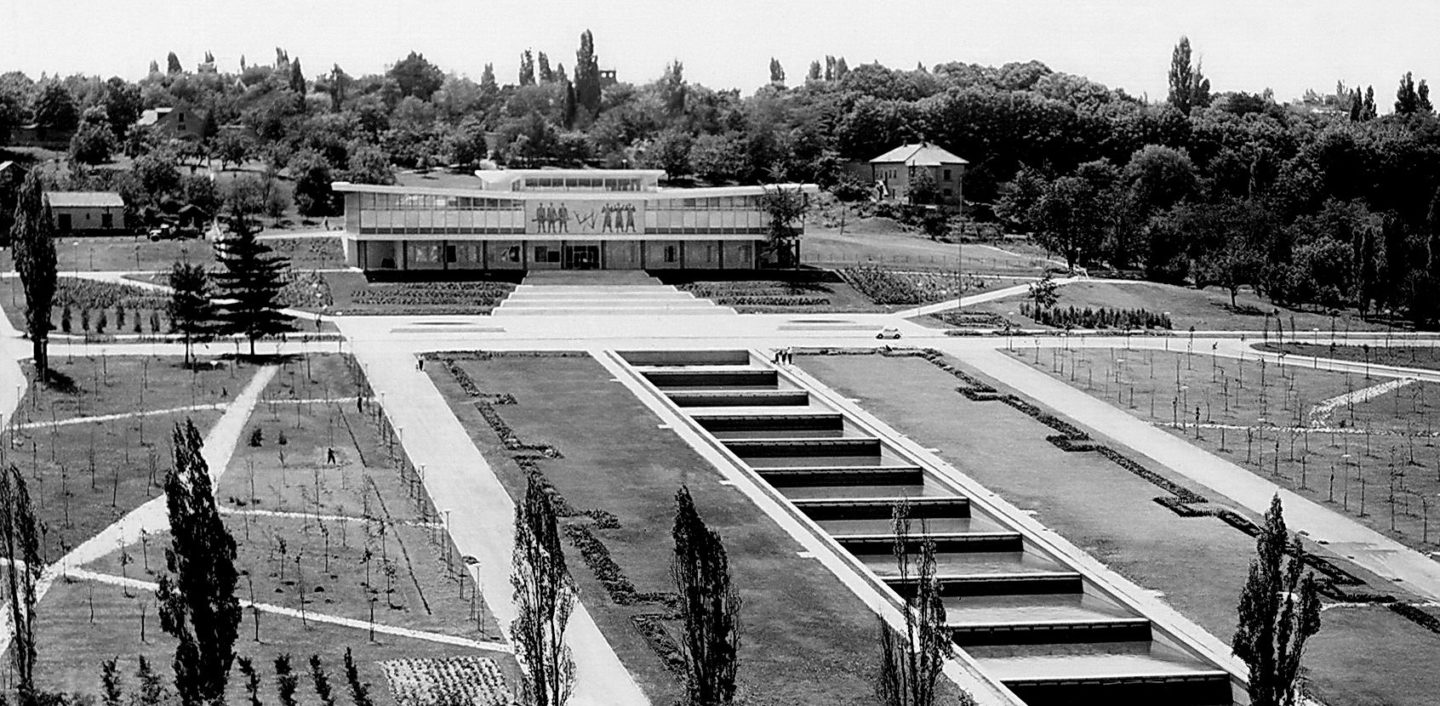
History
Today’s Museum of Yugoslavia was called the Museum of Yugoslav History until the end of 2016. The name was changed twenty years after the Museum of Yugoslav History was established (1996) by merging and simultaneously dissoluting of the two institutions: the Memorial Center “Josip Broz Tito” and the Museum of the Revolution of Yugoslav Nations and Ethnic Minorities. Due to the socio-historical circumstances, wars and the breakup of Yugoslavia in the 1990s, these museums became a burden, unwanted witnesses of the past, traces of which were being thoroughly erased from the present. The funds of these two institutions served as the basis on which, according to a political decision, the new museum was established. Even though this musealization of Yugoslavia was supposed to “put it on the shelf” in accordance with the understanding of a museum as a storage place for “old and unnecessary things”, it turned out that the collections, histories, documentation and employees of these two institutions became the basis of a twenty years long search for ways of acknowledging Yugoslavia as a heritage.























Documents for downloading
EXPLORE DOCUMENTS
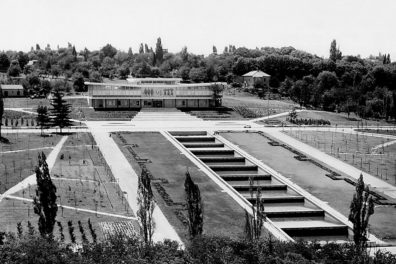
The Origins: The Background for Understanding the Museum of Yugoslavia
Creation of a European type of museum was affected by a number of practices and concepts of collecting, storing and usage of items.
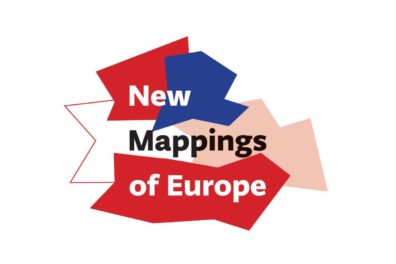
New Mappings of Europe
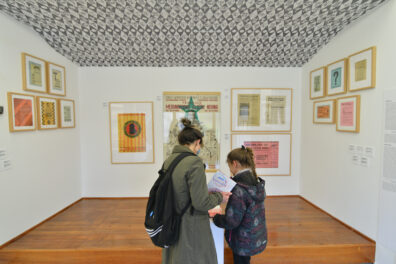
Museum Laboratory
Starting from the Museum collection as the main source for researching social phenomena and historical moments important for understanding the experience of life in Yugoslavia, the exhibition examines the Yugoslav heritage and the institution of the Museum
